

Save a Dive Kit – How To Build Yours!
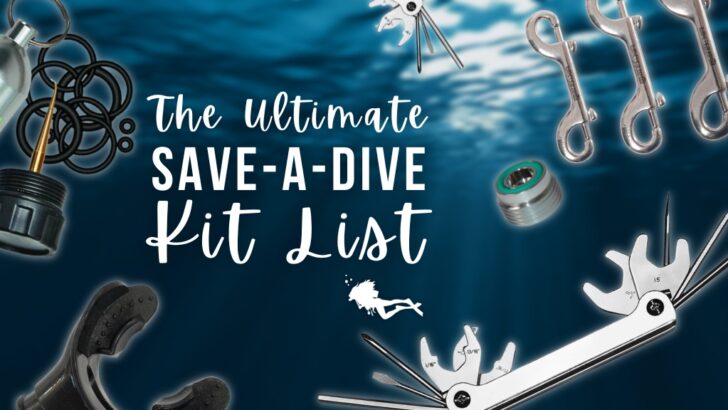
Some of the best save a dive kits are built through years of diving mishaps. A mask goes missing, a fin strap snaps, or an o-ring bursts… and a disappointed diver is left high and dry instead of exploring the underwater world. Next time, the diver remembers to pack that spare mask, extra fin strap, or spare o-ring, and voilà – a save a dive kit is born.
Fortunately, though, not everyone has to learn about save a dive kits the hard way. The scuba diving community is teeming with enthusiastic and experienced divers keen to share advice, swap tips, and make sure we all learn from each other’s mistakes. Here, we’ll run through some top suggestions for your save a dive kit contents and explain a bit about why they might come in handy.
Hopefully there’s something on our save a dive kit list you haven’t heard of yet and you’ll be inspired to take it on your next trip. Who knows, it might just save the day!
What is a save a dive kit?
Save a dive kits are designed to get you into the water, even when the odds are against you. They typically contain a mixture of spare parts, tools for repair, and personal items. These can come in super handy before, during, or even after a dive.
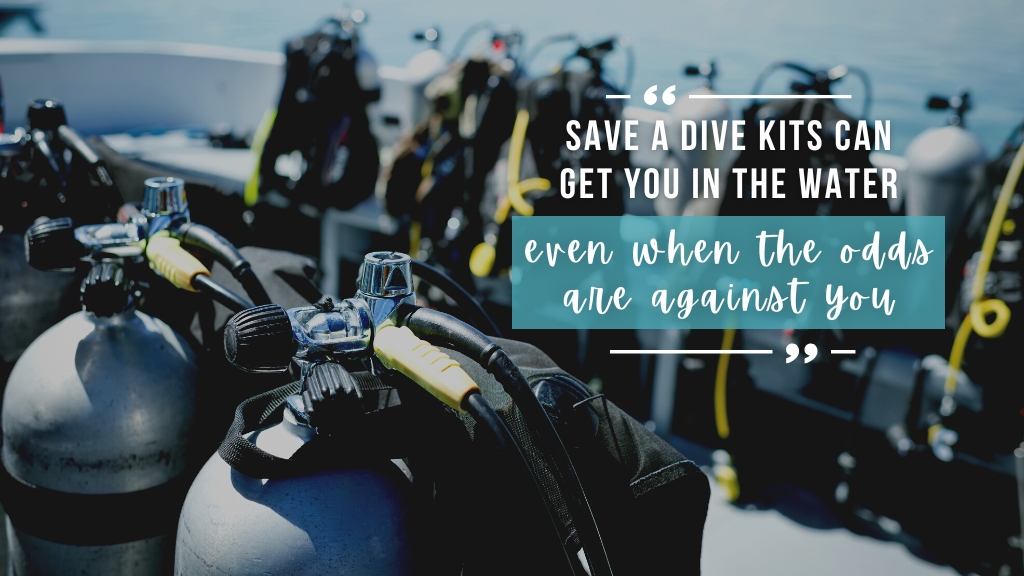
Although there are some pre-made save a dive kits out there, most scuba divers tend to build up their own kits – often over several years.
What goes in a save a dive kit?
Of course, not all save a dive kits will be the same. What goes into your kit will depend on the type of gear you use, where you dive, and what type of diving you do. For instance, an underwater photographer and a scuba diving instructor are likely to have two very different kits!
However, some items tend to save dives time and time again, and we’ve summarised them in the sections below. Read on, and add these to your save a dive kit list.
One of the simplest ways to defend yourself from gear failure mishaps is to take some spare gear with you. Although some highly organised tour operators might stash some spare BCDs and/or regulators aboard, personal save a dive kits tend to only include smaller items.
These tiny little rings are used to form air and water-tight seals between two joining parts – like your cylinder and your regulator. Tank valve o-rings are lightweight, affordable and super easy to change in the field, but you can’t dive without them. A miniature set with o-rings and an o-ring pick is an ideal addition.
Mask and Mask Strap
Although spare masks can be a little bulky to carry around with you, they do go missing or break from time to time. If you don’t want to risk using someone else’s leaky mask or, even worse, being left without a mask at all, a spare is the way to go. Opt for a frameless mask which can easily fit into a BCD pocket.
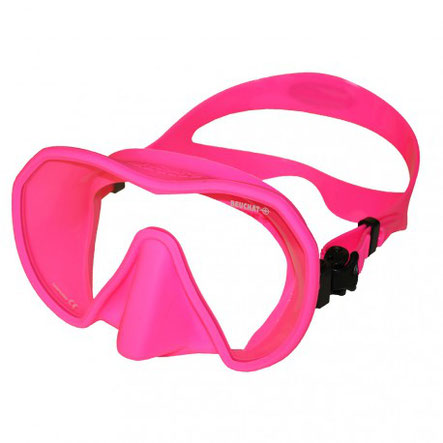
Spare straps are small, affordable, and essential (unless you’re using full foot fins). What more is there to say?
Octopus (Alternate Air Source) Holder
You can usually get away with tucking your octopus in a loop or pocket, but it’s always best to secure it in a proper holder . This stops it dragging on the seabed where it might harm fragile marine life.
Broken mouthpieces are a real pain. They can make your jaw sore, your lips numb, and can be super distracting. Fortunately, a spare mouthpiece is another affordable item that won’t take up much space in your save a dive kit.
Dry Suit Seals
If you tear your dry suit seal before, or even during, a dive, it doesn’t have to be game over for the rest of the day. Of course, the type you need will depend on your suit’s material – and some are easier to replace than others – but it’s definitely worth thinking about spare seals .
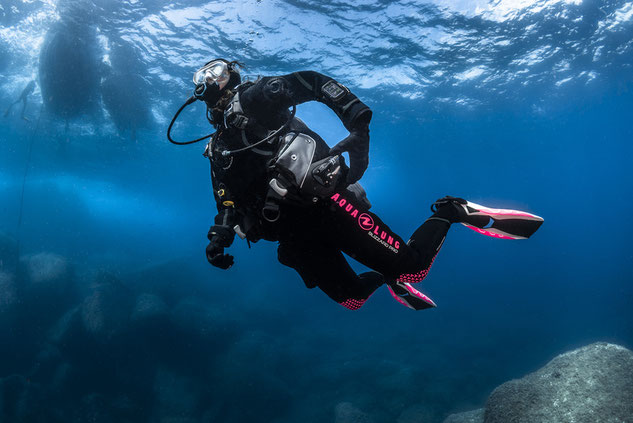
Spare Computer and Battery
Although dive computers save you a lot of planning time versus traditional tables, you never know when they might run out of battery or crash completely.
Spare batteries are a great idea, but not all models have this option. It can also be tricky to replace a battery when you’re on the move.
Having a spare computer is ideal. Some of the more affordable models, like the Suunto Zoop, make great beginner computers and often last long enough to become a back-up when you upgrade to a new one.
Allen Key and Tank Adapter
No matter how organised you are, there will come a time when you (or a fellow diver) will end up with a tank and regulator that don’t match.
With an allen key and an adapter or insert you can easily convert a DIN tank to a yoke-friendly tank. Problem solved and dive saved.
Dive Multitool
Take the allen key one step further and pack a dive-specific multi tool . These usually contain different sizes of allen key, spanner heads, and small picks for removing o-rings. You never know when you might need to change a hose or adjust your equipment.
Spare Hoses
If you keep your equipment serviced you’d hope it wouldn’t happen, but you never know when a hose might spring a leak. A spare hose doesn’t take up too much extra space, and might just get you back in the water in an unexpected situation.

It’s almost impossible to take a spare for every bit of gear you might need on a dive. Imagine taking a spare BCD, tank, and dry suit.
Although repairs can help with some quick fixes, they can’t be used for everything. You should never dive with gear that’s unsafe.
Having said that, some things can be repaired without compromising on safety. The following list includes some must-haves, and the good news is that most of them won’t break the bank:
- Cable ties (and nail clippers to trim them with)
- Bungee cord or elastic bands
- Miniature sewing kit
Medical Save a Dive Kit Contents
It’s not always issues with gear that can put your dive in jeopardy – medical issues can too. Even if you’ve had your medical forms signed off, you never know when a bout of food poisoning might hit, or a friend might forget their sea sickness tablets. Here are a few things to bear in mind when packing your medical supplies.
Multi-tank dive days can mean spending hours at sea, and it’s super easy to forget to drink water amongst all the excitement. This can be dangerous, especially in warm climates, so it’s always a good idea to take some extra water with you.
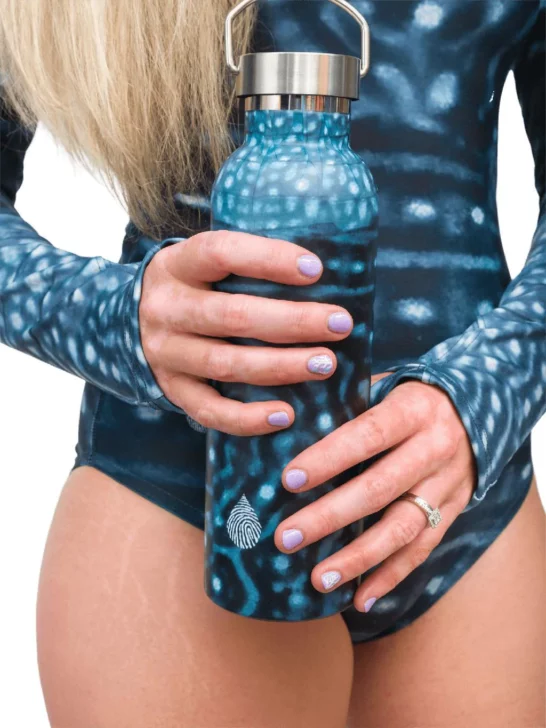
Rehydration Salts
Dehydration is one of the biggest factors for decompression sickness. If you do forget to drink water and find yourself dehydrated, rehydration salts are great for a speedy recovery.
When diving in cooler climates there’s always a risk of catching a chill. A flask of hot water can work wonders after a chilly dive.
These next few items speak for themselves:
- First aid kit
- Seasickness tablets
- Painkillers
- Diarrhoea tablets
- Spare contact lenses
Personal Save a Dive Kit Items
Personal items might not be absolutely crucial for getting in the water, but they can make all the difference when it comes to your comfort levels.
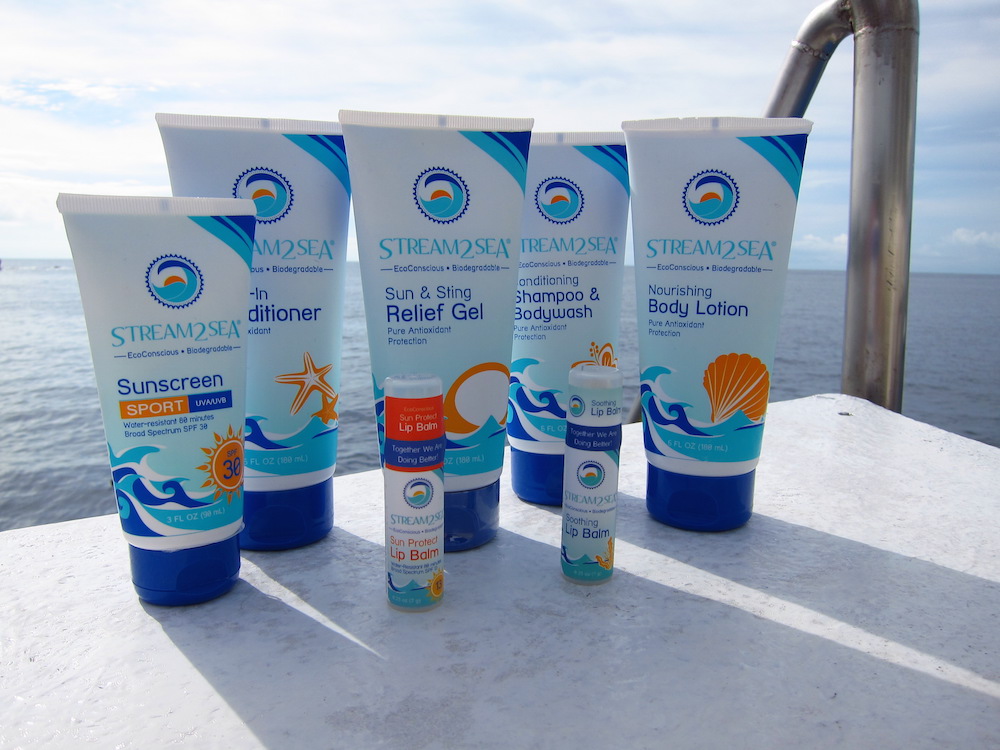
Here are some self-explanatory (but easy-to-forget) personal items that’ll keep you happy during long multi-dive days:
- Reef safe sunscreen
- SPF lip balm
- Tampons or menstrual cup
- Defog . It’s certainly not for everyone (we all know someone who prefers the old-school spit approach) but for some people it’s a staple. Make sure you opt for reef friendly options that won’t harm the environment – we love Stream2Sea’s formula .
Save a Dive Kit for Dive Professionals
For those of you who dive professionally, your save a dive kit list will depend on your role, but here are a few items to consider:
Slates, Pencils and Sharpeners
It’s amazing how easily pencils (and their lead) can go missing at sea. If you’ll be conducting research dives or communicating on a slate with students underwater, spare pencils are essential.
If you’re carrying out any type of mapping work, then a compass is a must. It’s also a good idea if you’ll be leading a dive – who knows when the conditions might turn and you find yourself disorientated.
Spare Reel and Delayed Surface Marker Buoy (DSMB)
In some conditions, it’s not safe to dive without maintaining contact with the surface. A broken line or a punctured DSMB can easily put a dive in jeopardy when the weather is rough, so it’s a good idea to pack a spare.
It’s always a good idea to take some extra weights with you when diving with inexperienced divers.
How should I pack my save a dive kit?
There are a few options for transporting your spare gear and dive-saving essentials. Watertight boxes and dry sacks come in a range of sizes. Many divers make use of boxes with compartments, such as fishing tackle boxes. Which one you go for will likely depend on the size and fragility of your gear.
Ultimately, save a dive kit lists vary considerably between divers. What’s essential for you might not be for others. As scuba divers, we have to expect the unexpected. Yet, with time and experience, it’s possible to get a good idea of what might help you save a dive one day. If you do forget something, fingers crossed your dive it’s in your buddy’s kit!

About the Author
Rose has spent the last few years living in Europe, the Seychelles and Kenya, working as a dive instructor, writer and conservationist. She’s back in the UK at the moment and is slowly acclimatising to cooler waters!
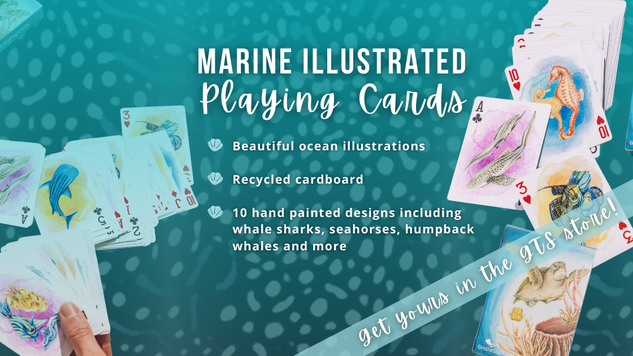
FREE SHIPPING* | EARN DIRECT REWARDS POINTS

- Scuba Accessories
Scuba Essentials: Save-A-Dive-Kit
"My fin strap broke." "My tank o-ring is missing." "My daughter's BCD isn't holding air." Whether you're a new, experienced, or professional diver, at one point or another you'll encounter a reason to need a save-a-dive kit. It can seem difficult and overwhelming at first to decide what to add to your save-a-dive kit at any level, but it is actually fairly simple. You’ll want to consider a few things. Consider for a moment Murphy's Law. Then, think about the dives you’ve done thus far. Finally, look at the gear you have and which parts of it you might need to save during a day of diving. Check below to get our tips on what you might want to include in your save-a-dive kit.
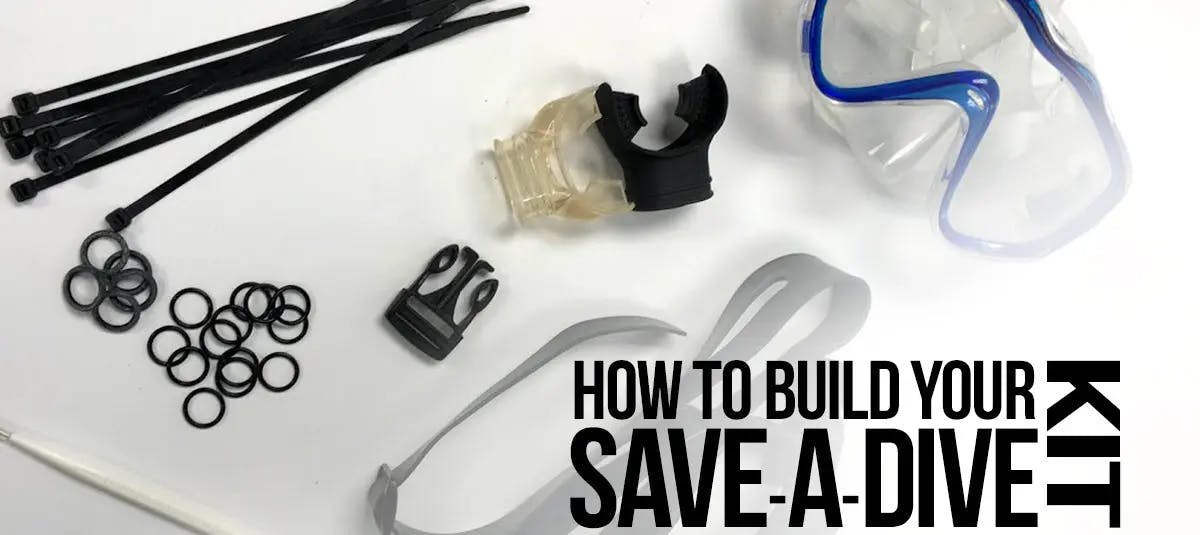
As a new open water diver who’s eager to continue and expand their diving, you start to add to your personal gear. To start your own save-a-dive kit, get a small, easily-portable dry box to hold your kit. Pro tip: pick a size up from what you think you need today - unless you're a relentless minimalist, you'll fill your first box about two-thirds of the way through your journey. Remember, it's better to have a little extra space and not need it than to need a little extra space and not have it.
Let's get started!
The EVO Save-A-Dive Kit is an outstanding start. This kit contains a silicone mouthpiece, a replacement fin strap, a snorkel keeper, zip ties, a backup silicone mask strap, and two O-rings for scuba tanks. This is the absolute minimum gear you need in your personal save-a-dive kit.
Mask, Boots, Snorkel, Fins - what can go wrong?
- Mask strap breaks
- Mask keeps fogging up
- Zipper on your dive boot breaks
- Snorkel keeper breaks
- Fin strap or buckle breaks
- Hair tie breaks
Add these parts to your save-a-dive kit:
- Duct tape to hold things together temporarily
- Zip-ties to replace a broken zipper
- Extra fin buckles (buckles must match your dive fins)
- A pack of hair ties, though we've seen zip ties used for this purpose, too
Even though your instructor, a boat crew member, or someone on site might be able to help you out with any of the these parts, we strongly recommend building your own save-a-dive kit. You'll be more prepared for the unexpected, and begin to learn how to fix some of your own gear issues. You'll become a more independent diver. And remember: the dive you save may be your own!
As you continue diving and gain more experience, you’ll witness problems that other divers have. You’ll see or talk about what they did to compensate for their issues and from that knowledge, be able to add to your save-a-dive kit. Whether you add a BC, regulator, computer, or wetsuit to your gear collection or expand on where you dive, you’ll have more to consider as you're building your kit.
BC, Wetsuit, Computer, Regulator - what can go wrong?
- Dump valve gets cracked
- String to the dump valve breaks
- Inflator button sticks
- Wetsuit zipper breaks
- Wetsuit zipper leash breaks
- Wetsuit rips or tears
- Tank that was rented is missing or blew an o-ring
- Computer is dead
- A hose leaks
- Regulator mouthpiece fails
Questions to ask:
- Is this leak one that can be fixed on site?
- Can the zipper be fixed? Can we rig a replacement?
- How many dives until the wetsuit tear gets worse?
- Wetsuit difficult to zip up?
- Do I know what to do if an o-ring blows?
- Do I know how to change my dive computer battery?

Add these parts to your save-a-dive kit
- Spare dump valve
- Paracord or braided nylon line
- Neoprene cement
- Zipper lubricant
- Replacement zipper pulls
- O-ring pick and tank sized o-rings
- Computer batteries
- Extra regulator hose
- Extra pressure gauge
- Extra bolt snaps and clips
- Extra regulator mouthpiece
Once you've assembled your personal save-a-dive kit, you'll see opportunities to improve it further. All you have to do is pay attention on your dives. What goes wrong? What do fellow divers always seem to forget, or need? We know one diver whose kit includes band-aids and hydrocortisone cream, another who packs granola bars and duct tape. Your own dives and interactions with other divers will inform the contents of your save-a-dive kit. Even better, you’ll become a valued source of knowledge for the new divers you meet and spend time with.
If diving has become a passion you share, and you're becoming a professional leader, you should consider adding to your save-a-dive kit. It's not just your own dive you might be saving anymore!
Personal or rented and miscellaneous gear - what can go wrong?
- Regulator free-flowing
- Ears wont clear
- Hose leaking bubbles at the 1st stage
- Forgotten dive computer (trust us - it happens!)
- Computer dies
- Allen wrenches
- Adjustable wrenches
- Needle nose pliers
- Extra LP hoses
- Extra HP hoses
- Variety of o-rings
- Scissors or Sea Snips
- Inflator hose
- Extra sunscreen
- Motion sickness pills
- EarShield water repellent
- Ear drops for swimmer's ear
This save-a-dive Kit will not only be an asset to you but also other divers you encounter. It will help educate them about thinking of all the components that need to be considered when diving. It’s great to help others, but you're also helping to create divers that can be self-reliant problem solvers and that's a huge advantage.
A save–a-dive kit is such an important tool for all levels of diving. It provides a sense of reassurance knowing that you have the tools to fix what needs to be fixed. As you further your diving, you’ll want to think about the aspects of your style of diving. What can go wrong, analyze other similar dives that you’ve done, and what tools or gear can you put in your kit to alleviate or prevent those problems from occurring. Though the above lists of items are helpful starting points, there are an infinite number of pieces that a diver, novice or experienced, can add to their kits. When creating your save-a-dive kit, cater it to your personal needs and diving environment. Talk to others and observe what they have in their kits to help get a better idea of some additions to yours. Keep in mind that, much like diving, you should not try to solve an issue that you haven’t encountered before or don’t have the training to adequately handle. You’ll always want to take the courses necessary to know how to fix the problem as well as ask for help.
- FIX-N-ZIP 1
- INNOVATIVE SCUBA CONCEPTS 13
- Princeton Tec 1
- Quease Ease 1
- STREAM2SEA 1
- $0 - $100 23
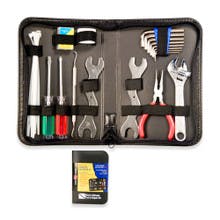
Deluxe Scuba Divers Tool Kit
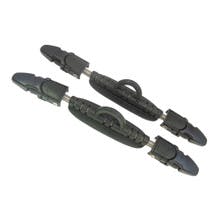
EZ Spring Dive Fin Heel Straps (Pair)
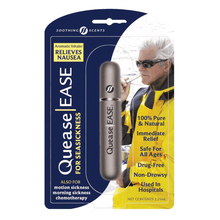
Quease Ease Aromatic Motion Sickness Inhaler
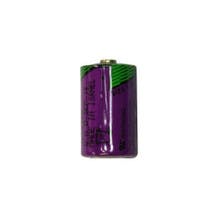
1/2 AA Lithium Battery 3.6V
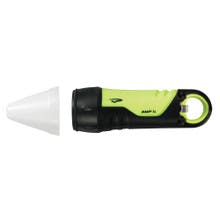
Princeton Tec Amp 1L 100LM Handheld Light with Cone and Churchkey
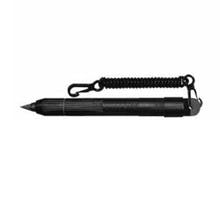
Super Graphite Pencil for Dive Slates
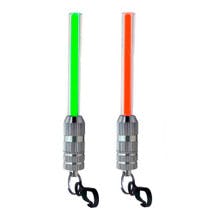
LED Marker Light for Scuba Diving
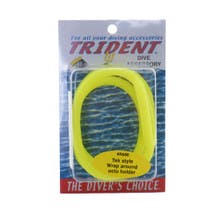
Wrap Around Octo Holder
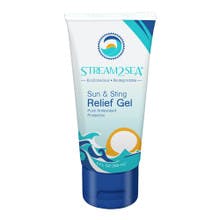
Stream2Sea Sun & Sting Relief Gel
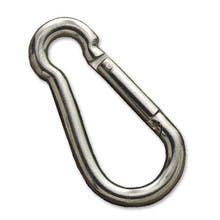
Stainless Carabiner 10mm by 100mm
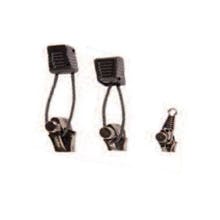
Graphite Zipper Pull 3 Piece Kit for Wetsuit Repair
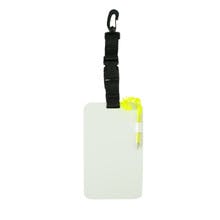
Scuba Diving Slate with Detachable Clip (4 x 8 inches)

11 Essential Items for Your Save-a-Dive Kit
Bringing your own save-a-dive kit along on your next dive trip might be the difference between exploring epic underwater scenery or staying on the boat.
If it hasn’t happened to you yet, it likely will soon. An aborted dive because of a gear malfunction. It’s inevitable.
After all, with so much gear to tinker with in scuba diving, it’s bound to happen at some point. An O-ring goes bad. Your mask strap breaks. A tear in your BCD. The list goes on and on…
That’s why, the more you immerse yourself into scuba diving, it’s HIGHLY recommended you invest in a quality save-a-dive kit. A package of goodies that will prepare you for any type of gear malfunction.
Sure, most dive operations carry one aboard their vessel. But take it from me, as someone who has worked for multiple dive shops, these are not always well-stocked, maintained and cared for.
Your best bet? Bringing your own.
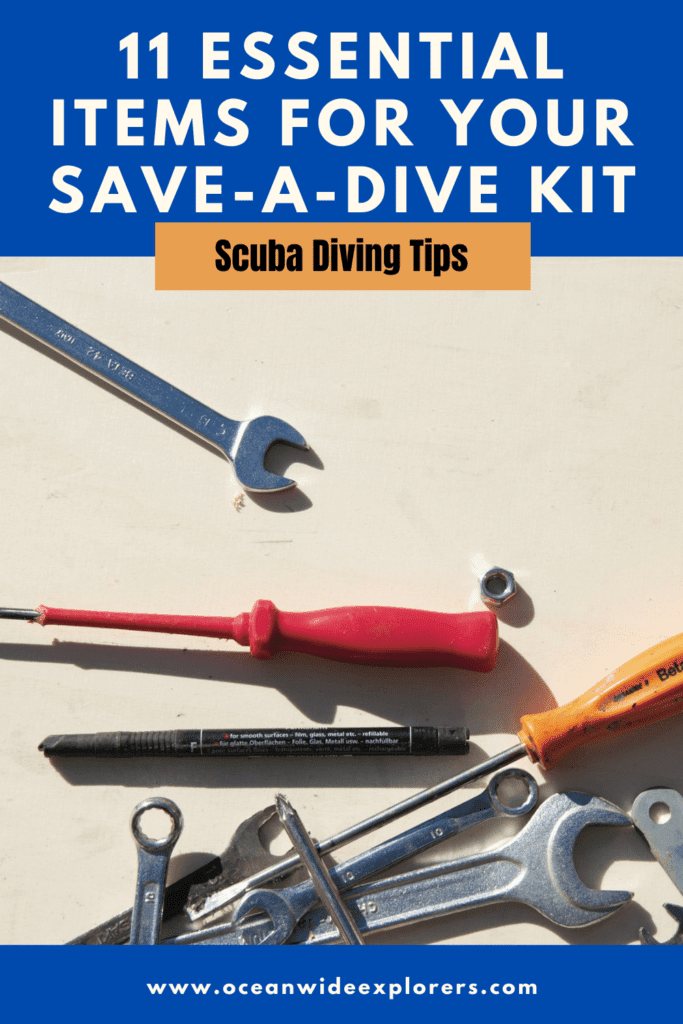
Save-a-Dive Kit List
These are the 11+ items we believe you should bring with you for every dive to handle any situation.
1. O-Rings and Picks
A popped, frayed or splayed O-Ring is the most common gear malfunction in scuba diving. It seemingly happens on the daily.
If you have this handy set, no matter which size O-Ring needs replacing, you’ll be prepared.

2. Scuba Multi-tool for Regulator Repair
Even beyond scuba, I carry a multi-tool on me wherever I go. You never know what will need fixing, twisting and wrenching at any given time.
Specifically, for scuba diving, just about everything will need fixing, twisting and wrenching at some point. Just prepare yourself for when it happens right before you’re about to giant stride off a boat.
Scuba Multi-tool

3. Extra Mask Strap
After dives of use and abuse, that mask strap you’ve been wringing around your head time after time is bound to snap at some point.
And when it happens, and you don’t have a replacement, it sucks. Because something so small and trivial can quickly turn your dive trip into one expensive boat trip.
Spare Mask Strap

4. Marine Adhesive Glue
Hole in your BCD? Fixed. Tear in your neoprene wetsuit? Fixed. Water seeping into places it doesn’t belong? Fixed.
This stuff works on everything and is a great addition to your save-a-dive kit.
Adhesive Glue

5. First Aid Kit
Bumps, bruises, cuts, wounds and even stings. You’d hate to cancel a dive because you got injured and couldn’t provide yourself with the proper first aid.
The big one, for scuba diving, is stings. Jellyfish, lionfish or urchins pricking you could easily end a dive if you don’t have the proper treatment remedies.
First Aid Kit

6. Gear Clips
This one is strictly personal. I never dive without a few spare gear clips on me or in my bag. They always come in handy for one reason or another.

7. Diver Tool and Repair Kit
Albeit, you do have the multi-tool we listed earlier, but these are just a few extra tools for your save-a-dive kit built with scuba diving in mind.
The screwdrivers, wrenches and Allen keys, in particular, will be useful at some point in your dive career ( usually for last minute regulator repair or maintenance ).
Diver Tool and Repair Kit

8. Mouth Piece for Regulator
Another one, similar to a mask strap, is a mouth piece for your regulator. At some point, they’re bound to rip. After all, we’re chewing on them for hours at a time underwater.
Now, I don’t know if you’ve ever tried using a regulator without a mouth piece so let me tell you from experience: it doesn’t work so well. Best keep a few of these in your bag just in case…
Mouth Piece

9. Zip Ties
Only third to duck tape and WD-40, zip ties are the solution to almost everything. Their purpose is limitless, particularly with scuba, where they can bind, cinch and secure anything your heart desires.

10. Dry Bag for Your Save-a-Dive Kit
It is scuba diving, after all. The perfect carrier for your save-a-dive kit contents should be large enough, and dry enough, for a successful trip to and from your dive destination.

11. Spare Accessories for Your Save-a-Dive Kit
These accessories are the most commonly misplaced, lost or broken when diving and could potentially end your dive day if they are. It’s never a bad idea to keep a spare or two in your dive bag.

Spare Sling

Your Save-a-Dive Kit Contents
By no means is this list exhaustive. In fact, many divers pack spare gear like regulators, masks and computers. For a list of recommendations on scuba gear that work well as spares (compact, lightweight) head to our article on Best Travel Scuba Gear .
However, this list does serve as a good starting point. Providing you with a more than sufficient kit to save your next dive vacation from turning into a dive nightmare.
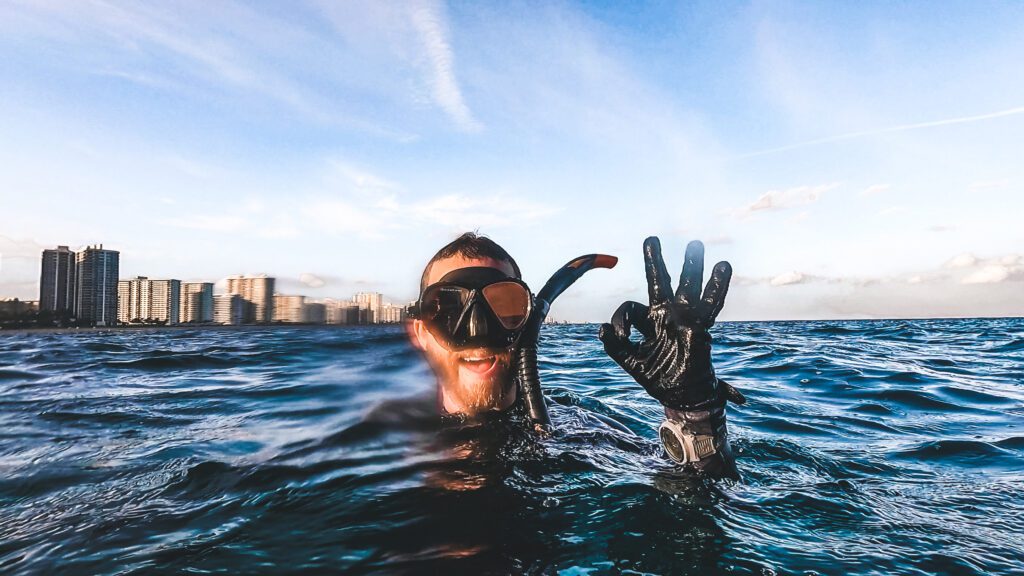
Enjoy this Post? Pin it!
Read more scuba diving tips.
We hope you enjoyed our post on what you should have in your save-a-dive kit. Hopefully you’ll find it useful on your next adventure! Here are a few more ocean-loving articles we think you should read next:
- Best Scuba Gear for Beginners
- Complete Guide to Scuba Diving in Jupiter, FL
- 10 Scuba Diving Refresher Tips
- How to Reduce Plastic Use
What do you pack in your scuba save-a-dive kit? What happens should we add into our save-a-dive kit list? Let us know in a comment below!
- Share on Twitter Share on Twitter
- Share on Facebook Share on Facebook
- Share on Pinterest Share on Pinterest
Similar Posts
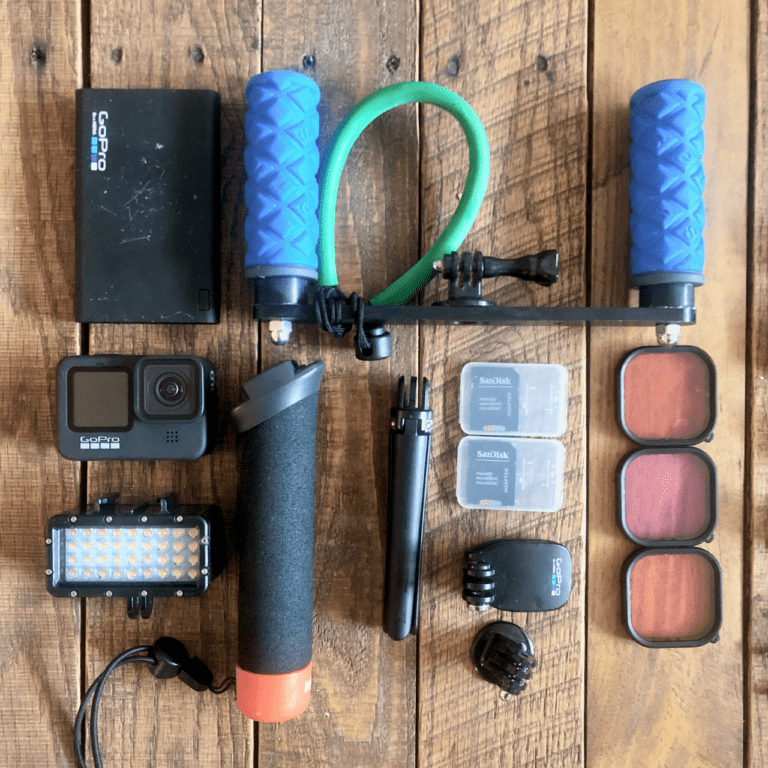
GEAR LIST: Our GoPro Setup for Scuba Diving
Looking for the best GoPro setup for scuba diving? This is the camera and accessories that work best for…
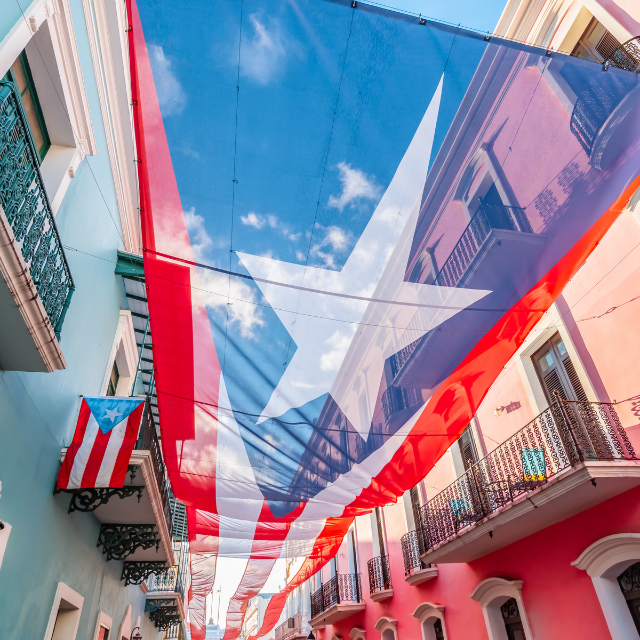
13 Unforgettable Adventures to Experience in Puerto Rico
Discover the top 13 adventures in Puerto Rico, from hiking to waterfalls and exploring bioluminescent bays to sailing the…
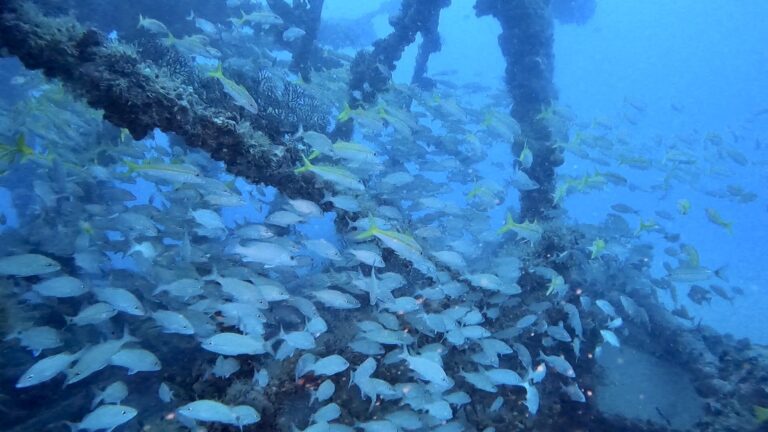
Scuba Diving Hog Heaven in Fort Lauderdale
A theme park of artificial reefs, Hog Heaven, and the surrounding structures, is one of the most popular shipwrecks…
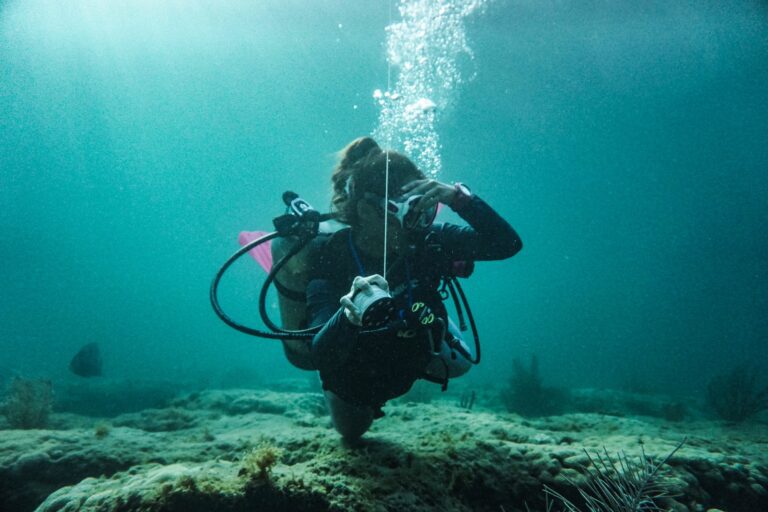
9 Useful Tips to Prevent a Foggy Scuba Mask
Consistently diving with a foggy SCUBA mask? Try these tips and tricks to defog your mask for good!
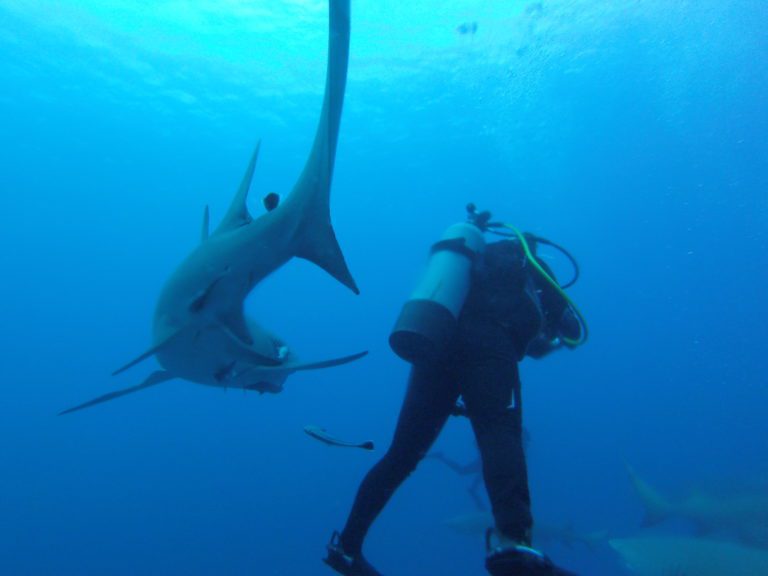
Common Sharks Seen While Diving in Florida
Aaah, the most misunderstood fish in the ocean: sharks! Due to dwindling numbers, you’ll be lucky to catch a…
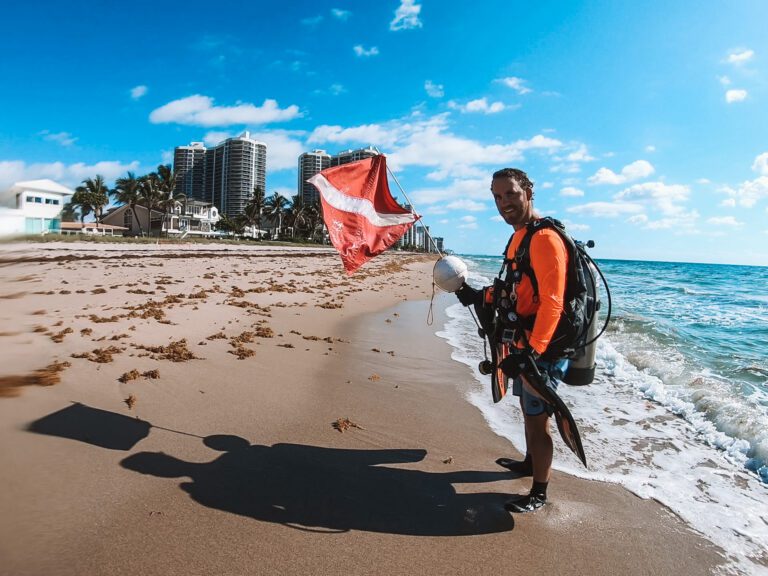
9 Essential Scuba Accessories for Shore Diving
Ever been on a shore dive? Self sufficiency, a dive buddy, and proper scuba equipment are a must! Start…
Leave a Reply Cancel reply
Your email address will not be published. Required fields are marked *

Scuba Diving Essentials: Save-A-Dive Kit
Diving into the depths of the ocean is an exhilarating adventure, but without proper preparation, it can quickly turn into a nightmare. Enter the save-a-dive kit, a lifeline for scuba divers facing unexpected equipment issues.
In this article, we delve into the essentials of a save-a-dive kit, from pre-packaged options to customized solutions.
Discover the importance of gear maintenance, the benefits of the PADI Equipment Specialist course, and valuable resources to enhance your diving experience.
Get ready to dive safely and confidently with a well-prepared save-a-dive kit.
Key Takeaways
- Save-A-Dive kits can be purchased pre-packaged or created by assembling the necessary items.
- Essential items for a Save-A-Dive kit include gear storage, spare parts, first aid supplies, and tools.
- Specialty divers may require additional items in their Save-A-Dive kit.
- It is important to properly dispose of old gear and consider eco-friendly options for gear disposal.
Importance of a Save-A-Dive Kit
The save-a-dive kit is an essential component of a scuba diver's knowledge, as it serves as a comprehensive set of tools and spare parts that can help address equipment failures and prevent potential dive disruptions.
Organizing your save a dive kit is crucial for easy access and quick troubleshooting during a dive. Keep your kit in a gear bag or dry box to protect it from water damage. Use zip ties or straps to secure loose items and prevent them from getting lost.
Taking the PADI Equipment Specialist course offers numerous benefits, including a deeper understanding of dive equipment and maintenance techniques. This course equips divers with the knowledge and skills to properly inspect, service, and care for their gear. It also provides valuable insights into troubleshooting common equipment problems, ensuring a safer and more enjoyable diving experience.
Essential Items to Include in Your Kit
Including extra fin straps and buckles, as well as a dive knife and various sizes of O-rings, is essential for a well-stocked save-a-dive kit. These items ensure that you are prepared for any unexpected equipment failures or damages that may occur during a dive.
When organizing your save-a-dive kit, it is important to consider the difference between reusable and disposable items. Reusable items, such as extra fin straps and buckles, can be used multiple times and are more environmentally friendly. On the other hand, disposable items, like O-rings, may need to be replaced after each use.
Tips for Creating Your Own Kit
When creating your own save-a-dive kit, it is important to carefully select the necessary equipment and effectively organize it for easy access during dives. Here are some tips for organizing your kit and the benefits of DIY kits:
- Categorize your equipment: Divide your gear into categories such as tools, spare parts, and first aid. This will help you locate items quickly when needed.
- Use a waterproof container: Invest in a sturdy gear bag or dry box to store your kit. This will protect your equipment from water damage and keep everything organized in one place.
- Customize your kit: By creating your own save-a-dive kit, you have the flexibility to include specific items that cater to your diving needs. This allows you to be fully prepared for any diving situation.
Benefits of DIY kits include:
- Cost-effectiveness: You can buy equipment separately and avoid paying for unnecessary items.
- Familiarity with gear: Creating your own kit allows you to familiarize yourself with your gear and ensure it is in good working condition before each dive.
Special Considerations for Specialty Divers
Specialty divers should take into account their specific diving needs and equipment requirements when assembling their save-a-dive kit. These divers, such as underwater photographers or technical divers, may require additional items to address their specialized needs. It is important for them to consult with a PADI Instructor to determine the appropriate contents for their save-a-dive kit.
Regular gear servicing and maintenance is crucial for specialty divers, as their equipment may undergo more wear and tear due to the nature of their diving activities. To ensure the longevity and reliability of their gear, specialty divers should follow gear care and maintenance tips provided by the equipment manufacturers.
Additionally, considering taking the PADI Equipment Specialist course can provide specialty divers with in-depth knowledge on maintaining and caring for their equipment.
Maintaining and Servicing Your Gear
To ensure the longevity and optimal performance of your scuba diving gear, it is essential to regularly maintain and service it. Proper gear maintenance will not only prolong the lifespan of your equipment but also ensure your safety underwater.
Here are three important steps to follow for gear maintenance:
- Rinse and dry your gear after each dive: Saltwater and sand can be corrosive to your gear, so it is crucial to rinse everything thoroughly with fresh water and allow it to dry completely before storing it. This will prevent the buildup of salt crystals and the growth of mold or bacteria.
- Inspect and replace worn-out parts: Regularly check your gear for any signs of wear and tear. Replace any worn-out or damaged parts, such as fin straps, buckles, or O-rings, to maintain optimal functionality and prevent potential equipment failure during dives.
- Service your gear regularly: It is recommended to have your gear professionally serviced at least once a year or as recommended by the manufacturer. This ensures that your equipment is in good working condition and any internal issues or potential problems are addressed.
Responsible Disposal and Recycling of Used Gear
However, it is important to responsibly dispose of and recycle used scuba diving gear. Eco-friendly gear disposal and recycling not only helps protect the environment but also contributes to the sustainability of the diving industry. By recycling materials such as neoprene, plastic, and metal, we can reduce waste and conserve resources. There are several benefits to gear recycling, including the reduction of landfill waste, the conservation of raw materials, and the prevention of pollution associated with the production of new gear. Many local dive shops offer recycling programs or accept used gear for donation. Additionally, some organizations and dive clubs may also accept donations of used gear. By taking these steps, we can ensure that our old gear is given a second life while minimizing our impact on the environment.
Additional Resources for Scuba Divers
Scuba divers can benefit from exploring additional resources available to enhance their knowledge and skills in the underwater world. Here are three valuable resources for scuba divers:
- Eco-Friendly Gear Disposal: Properly disposing of old scuba diving gear is essential for environmental sustainability. Divers can research eco-friendly options for gear disposal, such as recycling programs offered by local dive shops. By recycling materials whenever possible, divers can contribute to reducing waste and protecting the marine environment.
- Finding a Local Dive Club: Joining a dive club provides numerous benefits for scuba divers. It offers opportunities to connect with like-minded individuals, share experiences, and learn from experienced divers. Dive clubs often organize group dives, training sessions, and social events, fostering a sense of community and camaraderie among divers. Through dive clubs, divers can expand their network, gain valuable insights, and discover new diving locations.
- Scuba Diving Resources and Information: To stay updated with the latest news and trends in scuba diving, divers can explore various resources and information sources. These include websites, forums, magazines, and social media platforms dedicated to scuba diving. Divers can access information on high-paying jobs in the diving industry, the best diving destinations for families, gear care and maintenance tips, and much more. By staying informed, divers can enhance their diving experiences and make well-informed decisions.
Jobs and Career Opportunities in Scuba Diving
The scuba diving industry offers a wide range of jobs and career opportunities. This includes positions in dive instruction, underwater photography, marine conservation, and dive resort management.
Dive instructors play a crucial role in teaching and certifying new divers. They are responsible for providing training and guidance to ensure the safety and skill development of their students.
Underwater photographers have the unique job of capturing the beauty of the underwater world. They use specialized equipment and techniques to document marine life and underwater environments.
Marine conservationists work to protect and preserve marine ecosystems. They conduct research, implement conservation strategies, and raise awareness about the importance of ocean conservation.
Dive resort managers oversee the operations and guest experience at dive resorts. They are responsible for managing staff, coordinating dive trips, and ensuring the smooth running of the resort.
Each of these roles comes with its own benefits and challenges. Jobs in scuba diving allow individuals to work in unique and exciting environments, explore the wonders of the ocean, and share their passion with others. However, the industry can also be physically demanding and require extensive training and certifications.
Nonetheless, for those who are passionate about the underwater world, the rewards of a career in scuba diving can be immeasurable.
Best Diving Destinations for Different Types of Divers
When planning a scuba diving trip, it is essential for divers to consider the best diving destinations based on their individual preferences and experience levels.
Here are three of the best diving destinations for beginners:
- The Great Barrier Reef, Australia: Known for its vibrant coral reefs and diverse marine life, the Great Barrier Reef offers calm and clear waters, making it an ideal destination for beginner divers.
- Bonaire, Caribbean: With its easy shore dives and gentle currents, Bonaire is a popular choice for beginners. The island is home to numerous dive sites that offer colorful coral reefs and abundant marine life.
- Koh Tao, Thailand: Koh Tao is renowned for its affordable dive certifications and calm waters. This tropical paradise boasts a variety of dive sites suitable for beginners, including shallow reefs and gentle drop-offs.
Here are three of the best diving destinations for advanced divers:
- The Maldives: With its strong currents and deep dive sites, the Maldives offers a thrilling experience for advanced divers. Divers can explore vibrant coral reefs, encounter large pelagic species, and even dive with manta rays and whale sharks.
- Galapagos Islands, Ecuador: The Galapagos Islands are a dream destination for advanced divers. The islands boast unique and diverse marine life, including hammerhead sharks, marine iguanas, and sea lions.
- Truk Lagoon, Micronesia: Truk Lagoon is a paradise for wreck diving enthusiasts. This World War II Japanese shipwreck graveyard is home to over 60 sunken vessels, offering a challenging and exciting experience for advanced divers.
Whether you're a beginner or an advanced diver, these destinations provide unforgettable underwater experiences that cater to different skill levels and interests.
Frequently Asked Questions How Often Should I Check and Replace the Items in My Save-A-Dive Kit?
Checking and replacing items in your save-a-dive kit is crucial for maintaining safety and preparedness. Regularly inspect and replace expired or damaged items. A well-stocked kit ensures readiness for any diving emergency and promotes a smooth and enjoyable diving experience.
Can I Use My Save-A-Dive Kit for Snorkeling or Other Water Activities, or Is It Specifically for Scuba Diving?
A save-a-dive kit can be used for snorkeling and other water activities, as it contains essential items such as gear bags, extra straps, and repair kits. These versatile kits provide convenience and preparedness for various aquatic adventures.
Are There Any Specific Regulations or Restrictions on What Can Be Included in a Save-A-Dive Kit When Traveling Internationally?
When traveling internationally, it is important to be aware of any specific regulations or restrictions regarding the contents of a save-a-dive kit. Certain countries may have limitations on items such as knives or other sharp objects.
Is It Necessary to Have a Save-A-Dive Kit if I Only Dive in Controlled Environments Such as Pools or Indoor Dive Centers?
Having a save-a-dive kit in controlled environments such as pools or indoor dive centers is still necessary. It provides benefits like being prepared for emergency situations and maintaining the kit ensures its functionality when needed.
Can I Customize My Save-A-Dive Kit to Fit My Personal Diving Needs and Preferences?
Customizing your save-a-dive kit allows you to tailor it to your personal diving needs and preferences. This offers the benefit of having essential items that are specifically chosen to enhance your diving experience and ensure you are prepared for any situation.
Leave a Comment Cancel reply
Save my name, email, and website in this browser for the next time I comment.
Scuba Do is a participant in the Amazon Services LLC Associates Program, an affiliate advertising program designed to provide a means for sites to earn advertising fees by advertising and linking to products on Amazon.com. Amazon and the Amazon logo are trademarks of Amazon.com, Inc, or its affiliates. As an Amazon Associate I (scuba-do.com) earn from qualifying purchases.
Call Us 9AM-5PM EST
(716) 691 9100
Local Store
(716) 837 3483
Gift Cards for Anyone,
for any occasion
Free Shipping
when you spend $50+

Login to my account
Enter your e-mail and password:
New customer? Create your account
Lost password? Recover password
Recover password
Enter your email:
Remembered your password? Back to login
Your cart is empty
Scuba Essentials: Save-a-Dive Kit
- News and Events
- Scuba Skills
- Health and Safety
- Marine Life

A s scuba divers, we are very much reliant upon the gear we use, and, sometimes, even a minor equipment malfunction may become a reason you have to miss that long-anticipated dive. So, it is essential to carry a well-stocked save-a-dive kit that will help you handle basic, foreseeable issues and gear hiccups, such as a broken mask strap, dead computer battery or blown O-ring. The exact contents of a save-a-dive kit aren’t universal and will vary depending on the gear you use and the diving you do. Nonetheless, some things will be in most, if not all, kits. Below, you’ll find a list of items that should help you to troubleshoot the most common problems that may arise before, after or during a dive. Let’s start with some generic pieces that you’ll need regardless of the gear you carry.
First of all, you need to find an appropriate container for all your spare parts, tools, etc. There are many options you can choose from, some opt to use a dry box or a pelican case, while others go for a dedicated small dive bag or reg bag. When making a decision, think about size, organization, accessibility, and desired water tightness. Keep in mind, you will likely have several items that you don’t want getting wet, so consider getting at least a water-resistant, if not a submersible, container.

Various O-rings
Many parts of your scuba equipment, including regulators, valves, lights, and dive computers, contain O-rings, which may perish, dry out and develop cracks as time goes by. Therefore, it is important to carry a variety of different sized O-rings. They often come in kits, so you can choose a compact keychain style container with 12 O-rings and a small pick or go for a large 200-piece set with an assortment of O-ring picks included. If you’re using high percentages of nitrox or pure O2 for decompression, make sure the O-rings you get are oxygen compatible.
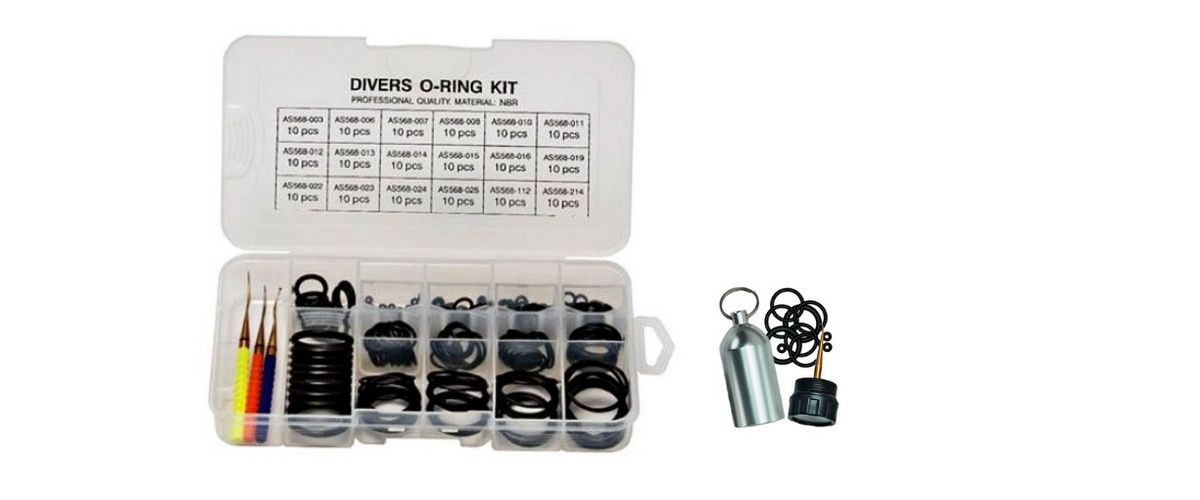
O-ring Picks
If your O-ring kit does not include a pick, make sure to purchase it separately, as the new O-ring will not do you much good if you don’t have a tool to dislodge old, worn or broken one. O-ring picks look much like dental tools but, ideally, are made out of brass as stainless steel tools can scratch delicate surfaces on valve faces or regulators.
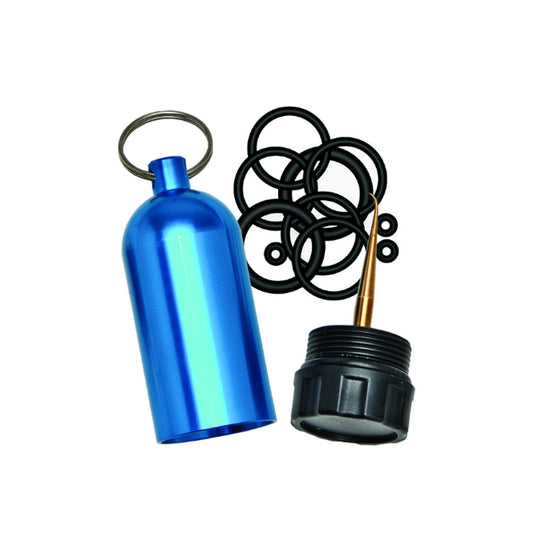
Innovative Tank KeyChain With O-Rings and Pick
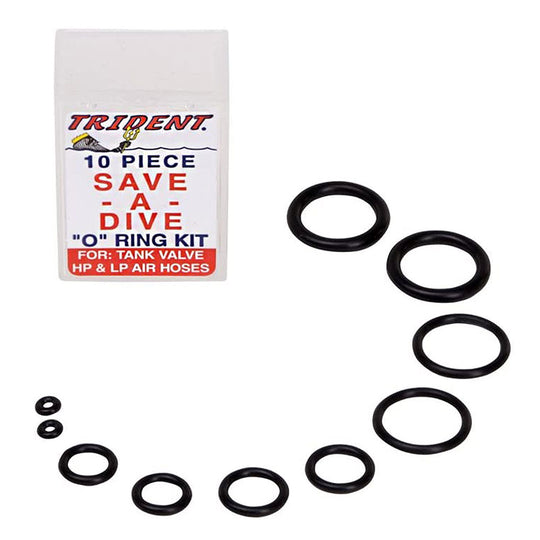
Trident 10 Piece Save A Dive Mini O-Ring Kit

Trident Deluxe Save A Dive 40 Piece O-Ring Kit Accessories
Silicone grease.
Silicone grease or spray is a great all-purpose lubricant that can protect the rubber parts of your equipment from drying out or cracking and will shield the metals from rust and corrosion.
Keep a basic toolkit handy, just in case you need to make a few emergency repairs to your equipment (assuming you know how to!). You can get a handheld scuba multi-tool or a whole toolkit, made specifically for diving equipment. Ideally, you should have some hex/alan keys (imperial and metric), wrenches or a small adjustable crescent wrench, a flat head (and possibly a Phillips head screwdriver), needle nose pliers and a cutting device.

XS Scuba TL103 Tool Master
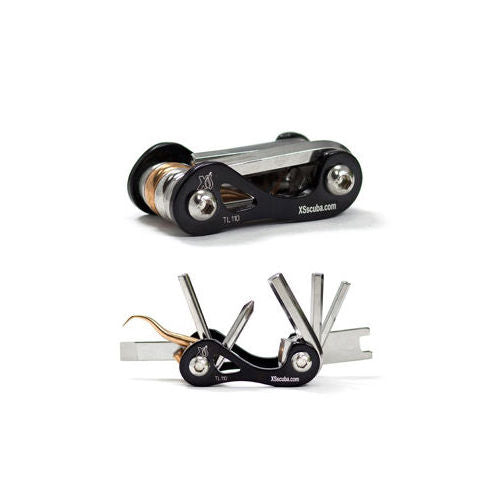
XS Scuba Scuba Multi-Tool
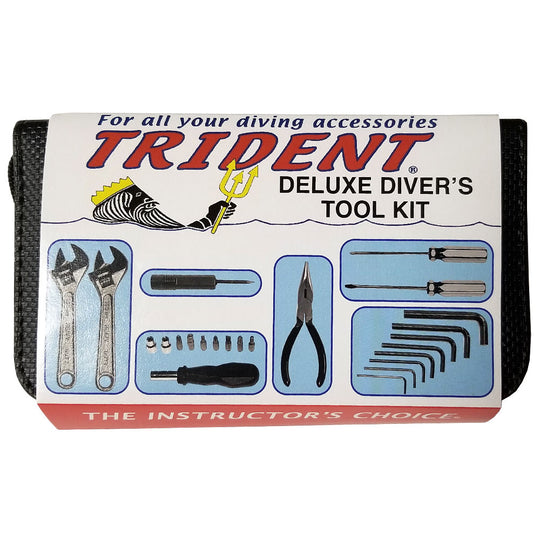
Trident S105 Deluxe Divers Tool Kit
Zip ties / zap straps.
These work great in emergencies to fasten broken gear and can even be used to attach mouthpieces to regulator second stages.
First Aid Kit
All scuba divers should carry a first aid kit as standard. You never know when you may need to use it. In addition to regular first aid items, divers may want to add waterproof band-aids, sunburn cream, antihistamine, eye and ear drops, antiseptic cleanser, and sting aid. You can start with one of the DAN first aid kits , and then supplement it. Or assemble your own from scratch.

Once you have the essentials covered, think about the gear you carry and what parts of it might need to be fixed or replaced during the day of diving. We’ll cover the example of somebody with a basic scuba kit that includes a mask, snorkel, fins, BCD, wetsuit, computer, and regulator.
Mask fogging won’t make you cancel the dive, but may seriously spoil the experience. So, get an effective anti-fog agent to keep your mask free from fog.
Spare Mask Strap
Mask straps, usually made of a fairly thin strip of rubber, tend to break at the most inopportune times. So, having a spare on hand can save a day of diving in a hurry. You can also choose to get a neoprene strap instead of a standard rubber one. It is less likely to break, and won’t pull on your hair. Ideally, you should also have an extra mask in your kit and bring it on a dive in case the strap breaks mid-dive or you lose your mask.
Spare Mouthpiece
Mouthpieces wear down over time, and suddenly you may find yourself chewing through yours, so keeping a spare is smart. Some divers prefer a particular style of a mouthpiece and it might be nice to have an extra of the one you like, but there are also many inexpensive ones that can be used as a temporary fix or given to a buddy in need.
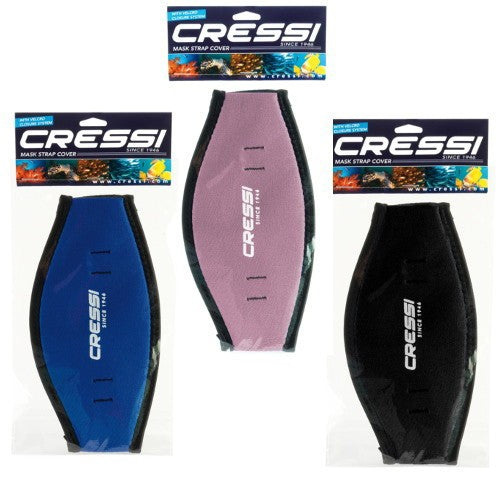
Cressi Neoprene Mask Strap Accessory
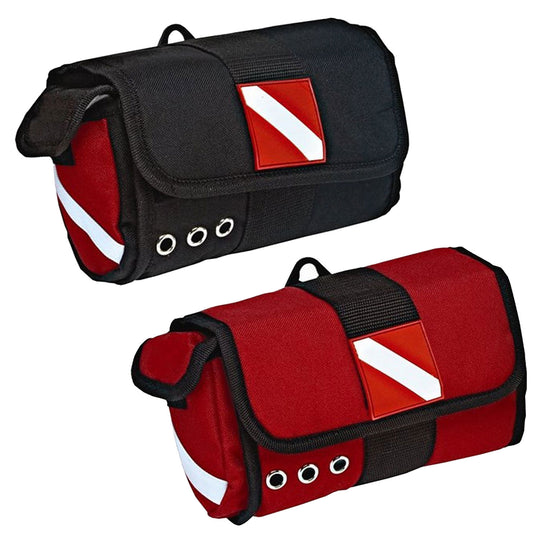
Innovative Dive Flag Mask Bag

ScubaPro Velcro Mask Strap

Trident Frog-Spit Anti Fog 12 Pack Accessories
Extra fin straps and buckles.
Fin straps suffer the same risk of breaking as a mask strap, so carrying a set of replacements is very useful. You can also upgrade to spring straps to prevent breakage in the first place. Note, some manufacturers use proprietary strap and buckle technologies, so make sure to get the ones that fit your fins.
Extra Hoses
Very rarely is there a catastrophic hose failure, but it can happen, so it’s a good idea to carry a spare HP Hose, Regulator Hose, and Inflator Hose, plus the air spools used to connect the SPGs to HP hoses. This is especially true if you are traveling to remote locations and are not sure if the local shops will have the spare parts you need.
Wetsuit Adhesive or Repair Kit
A wetsuit adhesive or sealant (there are some that, in addition to neoprene, work with a variety of other materials, including nylon, vinyl, PVC, rubber, and leather) can be used to patch small holes or seal leaking seams. The majority do take somewhere from 8 to 24 hours to cure and must be applied to clean dry surfaces, so you need to understand that this is not an on-the-fly fix. However, if you are planning on taking an extended trip to a fairly remote diving destination, this is a valuable item in your save a dive kit.

Zipper Wax / Lube
A jammed zipper is highly irritating, so keep some zipper lubricant handy at all times to ensure your wetsuit zipper functions as intended.

Stormsure Neoprene Queen Wetsuit Repair Glue 5gram

Underwater Kinetics HangAir Drying Systems for Wetsuits and Drysuits

Trident Black Neoprene Cement 4 Ounce Can Of Black
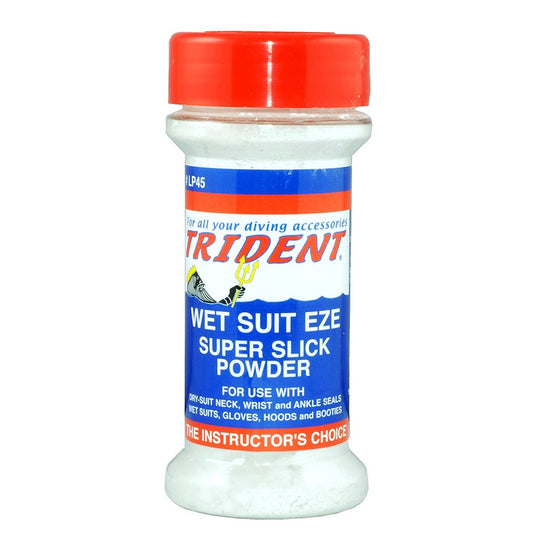
Trident Aqua Drysuit and Wetsuit Talcum Powder
Spare computer batteries.
Carry a spare of whatever battery or batteries your dive computer takes, plus the tool to change the battery if needed. If you have a computer with a rechargeable battery make sure to bring the charger as well as an electrical voltage converter/adapter. Although this may seem like a lot, most of these items are quite small. Still, if you want to save space, team up with your buddy to create a kit between the two of you. Remember, if you’re exploring different areas of recreational diving such as cold water, wreck, deep, sidemount, etc. and adding new gear to your setup, you may need to add or change the items in your save-a-dive kit. Additionally, don’t forget to restock items after you use them.
Related Posts

Shearwater Unveils the New Tern and Tern TX Dive Computers

Apple Enters the Dive Computer Market With the New Ultra Watch
![travel save a dive kit 9 Best Dive Computers in 2023 [Reviewed & Updated] - DIPNDIVE](https://dipndive.com/cdn/shop/articles/best_computers2.jpg?v=1658752532)
9 Best Dive Computers in 2023 [Reviewed & Updated] - DIPNDIVE
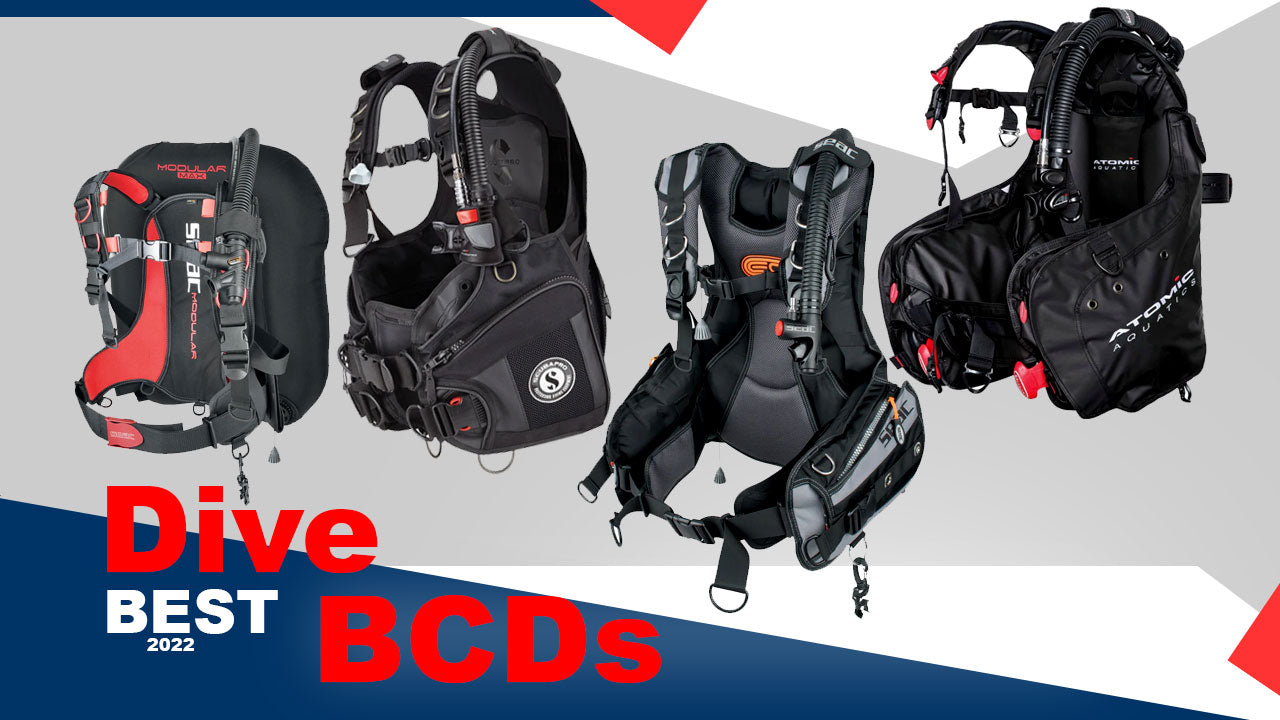
Best Scuba BCDs in 2022
Leave a comment.
Please note, comments must be approved before they are published
- Opens in a new window.
The Ultimate Scuba Save a Dive Kit
The ultimate save a dive kit.
The Ultimate Save-A-Dive Kit is the most comprehensive scuba toolset to ever hit the market. So you can dive freely, safely, and with complete peace of mind.

Endless Aquatic Adventures Await
We created this kit so you don’t need to waste time and energy building your own. With tools to fix any problem that crops up with your gear, you can enjoy the magic of your time underwater without fear of disaster striking. Nothing can replace regular inspections of your diving equipment before you dive, but with something goes wrong you need to be ready. With the right tools, and replacement parts our kit has everything you need. Don’t lose any time diving because of equipment failures. BE READY WITH THE ULTIMATE SAVE A DIVE KIT!
As the old saying goes: If you’re not prepared, you’re not diving. And despite how incredible diving is, things do go wrong. Whether you’re a recreational scuba diver, underwater photographer, technical diver, instructor, or specialty diver, you can’t put a price on safety.
The Ultimate Save-A-Dive Kit contains premium tools in a compact case, designed with your welfare in mind.

Top-Tier Tools
A comprehensive 12-in-1 toolkit with wrenches, allen keys, screwdrivers, scissors, pliers, snap hook, silicone grease, and an O-ring pick to fix anything and everything that goes wrong.
Quick Replacement Parts
Our kit has it all! Replacement mouthpiece, universal fin strap, mask strap, stainless steel double eye bolt clip, and snorkel keeper in case you need to act fast.
Complete set of O-Rings
Complete set of 60 Nitrox compatible Viton / FKM O-Rings to replace any broken or damaged O-Rings – a common issue in the scuba diving world that can’t be ignored.
Perfectly Portable
Forget clunky Tupperware boxes, metal tins, and heavy satchels. The Ultimate Save-A-Dive Kit is lightweight, compact, and practical with minimal drag. So portable, you won’t feel like you’re carrying anything at all.

Save Time, Create Memories
You’ve spent hours preparing, you reach the dive site, and you discover a broken piece of equipment. Maybe the zipper on your suit won’t budge, there’s a tear in the fabric, your friend forgets their mask, or an o-ring blows.
These are frustrating issues, but every diver faces them eventually.
You don’t need to turn back. The Ultimate Save-A-Dive Kit lets you spend more time creating epic memories down in that wreck, cave, or endless reef. You know, the type of moments that make the juice worth the squeeze.
Danger-Free Diving
Scuba diving is the most awe-inspiring and mesmerizing sport in the world. As divers, we understand this and know that proper preparation and planning prevents poor performance.
We created the Ultimate Save-A-Dive kit to help you fix any issues on the spot for you or your diving buddy. So you can get back to doing what you love most. Exploring the vast expanse of the sea.
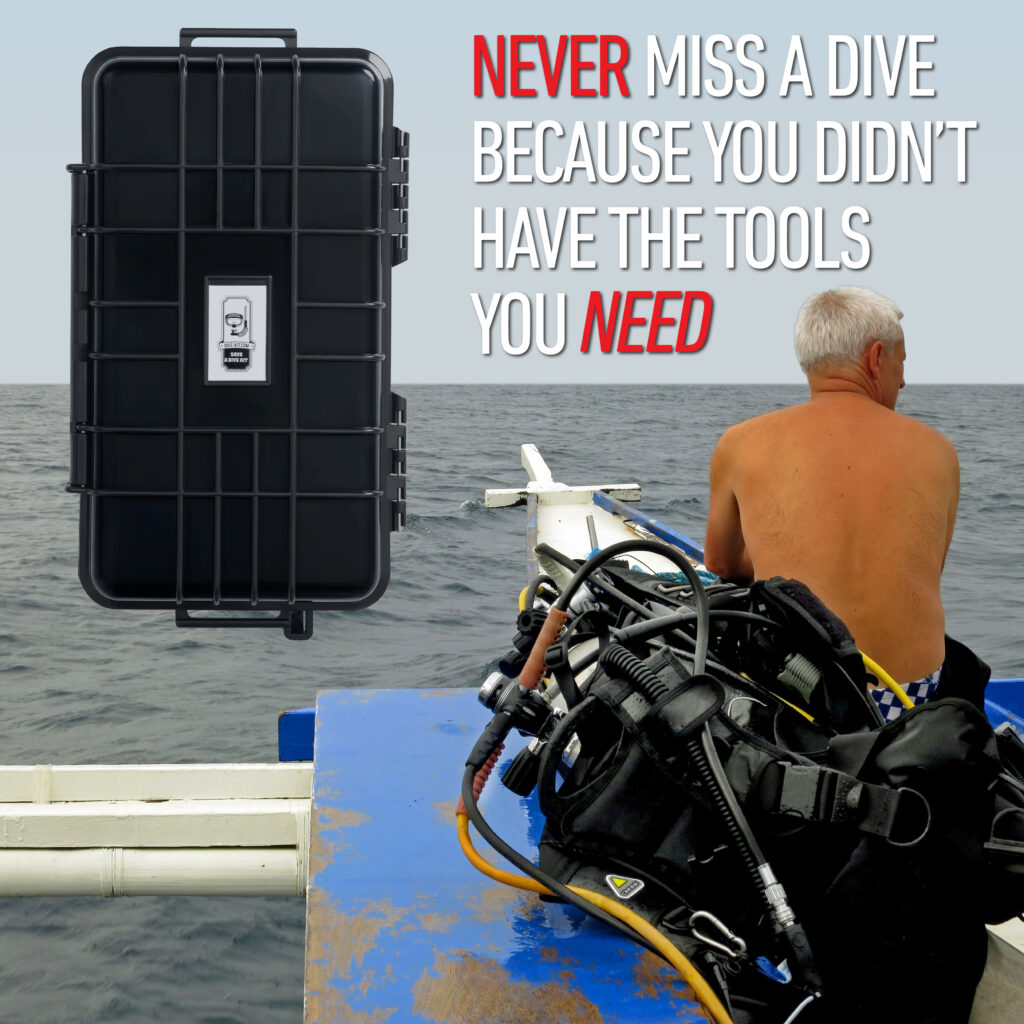
Dive into our mailing list by entering your email below. We’ll drop you a line every now and then with awesome tips, mega sales, product promos, and giveaways.

Dive Training Blogs
How to build your save-a-dive kit.
By Kate Heller
“My fin strap broke.” “My tank o-ring is missing.” My student’s BCD isn’t holding air.” Whether you’re a new, experienced, or professional diver, at one point or another you’ll encounter a reason to need a save-a-dive kit. It can seem difficult and overwhelming at first to decide what to add to your save-a-dive kit at any level, but it is actually fairly simple. You’ll want to consider a few things. First, think about Murphy’s Law, “What can go wrong will go wrong.” Second, analyze every aspect of the dives you’ve done thus far in your career. Third, think about the gear you have and what part(s) of it you might need to save during a day of diving. Keeping those in mind, we’ll look at a save-a-dive kit from the beginning diver’s kit to that of the instructor.
As a new open water diver who’s eager to continue their SDI diving career, you start to add to your personal gear. To start your own save-a-dive kit, you’ll want to look into getting a small dry box to fit everything you might need for your basic equipment. This would include your own mask, boots, fins, snorkel, etc. Aside from gear, also think about yourself as a diver. Keeping the three aspects to consider from above in mind, let’s look at each piece of gear.
Mask, Boots, Snorkel, Fins
What can go wrong?
- Mask strap breaks
- Mask keeps fogging up
- Zipper on the boots breaks
- Snorkel keeper breaks
- Fin strap breaks
- Fin buckle breaks
- Hair tie breaks
Analyze the dives you’ve done
- What’s been suggested to compensate for the mask problems?
- Could the boots be too tight so the zipper is distressed?
- Has the snorkel keeper come off during a dive already?
- Have you had to adjust the strap during your dive?
- Has the buckle come loose or unbuckled itself during a dive?
- Have you lost or broken a hair tie?
The parts you might need
- Spare mask strap
- Tape to hold the boot in place for the time being until you can acquire a new set
- Zip-tie to replace the broken zipper
- Spare snorkel keeper either plastic, silicone, or neoprene
- Extra fin straps
- Extra fin buckles
- A pack of hair ties
Miscellaneous items to consider
- Extra snorkel/regulator mouthpiece
Even though your instructor, a boat crew member, or someone on site might have a back up of any of the aforementioned parts, it is best to build your own save-a-dive kit. It will help you as a newer diver to be prepared for the unexpected as well as help you to understand how to fix some of your own gear issues and become more independent as a diver.
Once you continue in your diving career and gain more experience, you’ll witness problems that other divers have had. You’ll see or talk about what they did to compensate for their issues and from that knowledge, be able to add to your save-a-dive kit. Whether you add a BC, regulator, computer, or wetsuit to your gear collection or expand on where you dive, you’ll have more to consider come building your kit.
BC, Wetsuit, Computer, Regulator
- Dump valve gets cracked
- String to the dump valve breaks
- Inflator button sticks
- Wetsuit zipper breaks
- Wetsuit zipper leash breaks
- Wetsuit rips or tears
- Tank that was rented is missing or blew an o-ring
- Computer is dead
- A hose leaks
Analyze the dives you’ve done and will do
- Is this leak one that can be fixed on site?
- Can the zipper be fixed or have a temporary rig set up?
- How many dives until the rip or tear gets worse?
- Is the wetsuit difficult to zip up?
- What does the boat crew do if an o-ring blows?
- Have you been taught to change a battery?
- Spare dump valve
- Paracord or braided nylon line
- Wetsuit cement or patch
- Zipper wax/lube
- O-ring pick
- Tank size o-rings
- Computer batteries
- Extra regulator hose
- Extra pressure gauge
- Extra bolt snaps and clips
If recreational diving is as far as you wish to go and you want to explore more areas of recreational diving such as wreck, deep, sidemount, etc. you’ll want to continue referring back to the 3 aspects of diving to consider. From there, you’ll be able to build even further on your kit. You’ll also be a source of knowledge for the new divers that you meet and connect with.
If diving has become a passion that you want to share and educate others about on a professional level, there are other aspects of a save-a-dive kit as well as training to consider on top of your already assembled personal Kit.
Students’ Gear (Personal and Rented), Miscellaneous Gear and Equipment
- Student’s regulator is free-flowing
- Student’s ears wont clear
- Hose is leaking bubbles at the 1 st stage
- Student forgets computer
- Computer dies
Analyze the divers you’ve taught as well as past personal dive experience
- What are the common problems you’ve seen while helping with a class?
- What were the quick solutions for those problems?
- What did you need to alleviate the problem?
The parts and tools you might need
- Adjustable wrenches
- Needle nose pliers
- Extra LP/HP hoses
- Variety of sized o-rings
- Dump valves, inflator hose
- Extra sunscreen
- Motion sickness pills
As an instructor, this save-a-dive Kit will not only be an asset to you but also a learning tool for your students. It will help educate them early about thinking of all the components that need to be considered when diving. It’s great to have everything for them, but creating a diver that can be a self-reliant problem solver without you there is a huge skill advantage.
A save–a-dive kit is such an important tool for all levels of diving. It provides a sense of reassurance knowing that you have the tools to fix what needs to be fixed. As you further your diving career, you’ll want to consistently think about the three aspects of that style of diving. What can go wrong, analyze other similar dives that you’ve done, and what tools or gear can you put in your kit to alleviate or prevent those problems from occurring. Though the above lists of items are helpful starting points, there are an infinite number of pieces that a diver, novice or experienced, and an instructor can add to their kits.
When creating your save-a-dive kit, cater it to your personal needs and diving environment. Talk to others and observe what they have in their kits to help get a better idea of some additions to yours. Keep in mind that, much like diving, you should not try to solve an issue that you haven’t encountered before or don’t have the training to adequately handle. You’ll always want to take the courses necessary to know how to fix the problem as well as ask for help. What are some of the components in your save-a-dive kit?
To find out more about International Training, visit www.tdisdi.com .

DIVE 2017 Review: Scubaverse talks to Richard Corner from Mares (Watch Video)
New 3D Virtual Tour of the London Protected Wreck Site
From its humble beginning in 1994 to today, the group of training agencies Scuba Diving International (SDI), Technical Diving International (TDI), and Emergency Response Diving International (ERDI) form one of the largest diving certification agencies in the World – International Training. With 24 Regional Offices servicing more than 100 countries, the company today far exceeds the original vision the founders had when they conceived the idea on a napkin, sitting at a kitchen table in the early 1990’s.

You may like


Intro to Tech: What is it about?

SOMABAY: Scubaverse Trip Review (Watch Video)

SOMABAY: Scubaverse interviews Wolfgang Clausen, General Manager, ORCA Dive Clubs

SOMABAY: Scubaverse interviews Stefan Reichl, General Manager, The Breakers Diving & Surfing Lodge

Scubility: Achieving Success through Adaptability

Creature Feature: Undulate Ray
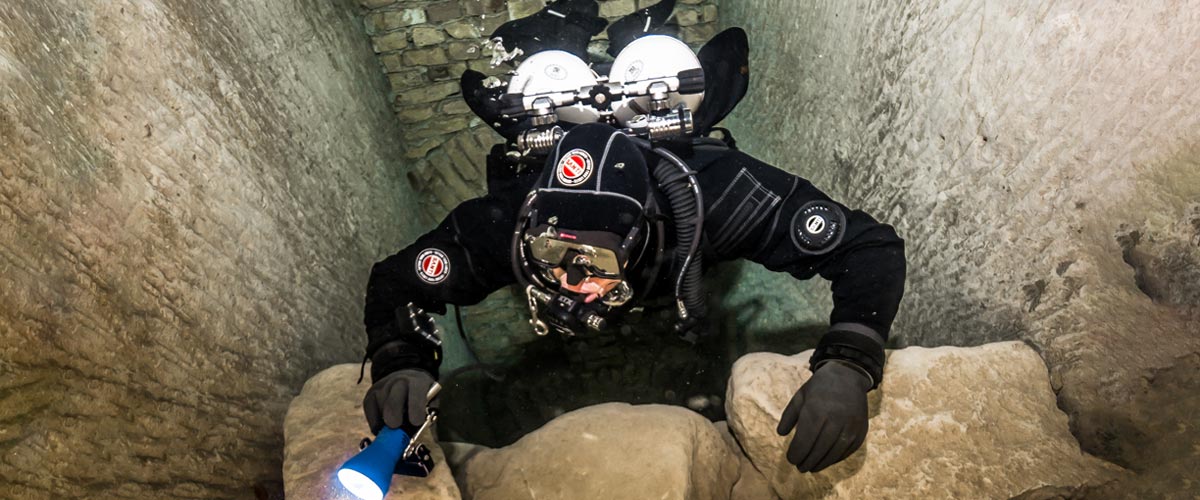
Article by José Pablo Mir Pictures by Cezary Abramowski
The world of technical diving is exciting. It opens the door to new sites, depths, and bottom times. More importantly, it opens our minds to a new way of planning, facing, and experiencing dives, even those not purely technical.
Becoming a technical diver is a process, and like in other aspects of life, we should find the proper entry point that suits us best based on our knowledge and experience. The Introduction to Technical Diving course from TDI -the world’s largest and most recognized technical diving teaching organization- is the best option for divers who have yet to gain experience in the fundamental aspects of this new practice. The course’s content and its embrace of new techniques and technologies make it possible to acquire a solid foundation to learn and gain experience in this practice properly.
Becoming a technical diver is not something that happens overnight, whether deciding to become one or receiving a certification card stating we are now technical divers. It is a slow process extending farther away than any introductory course. It requires effort and dedication. But it will bring us satisfaction from day one -or two.
It is a matter of mentality
First, we must understand and accept that technical diving, involving greater depths, longer bottom times, exotic gases, virtual or real ceilings, and more, comes with higher levels of risk than the sport diving we have been practicing until now.
Although this discussion usually starts with a warning about risks, as I’ve done in the previous sentence, our practice is not a game of chance.
Technical diving is a rational activity that requires maturity and good judgment, and we will put everything into ensuring that each dive is a successful one -meaning we return from it safe and sound. With this understanding, we will strive to establish a mental attitude more aligned with our practice and its realities.
This new “technical diver” mindset we will develop will lead us to be more cautious in our executions, more analytical in our plans, more rational in our strategies, and more detailed in our procedures.
Experience will keep teaching us to know ourselves better, to keep our anxiety and other emotions under control, and to manage our impulses. Over time, our senses will sharpen, and we will be more attentive to the particulars of the situation we find ourselves in.
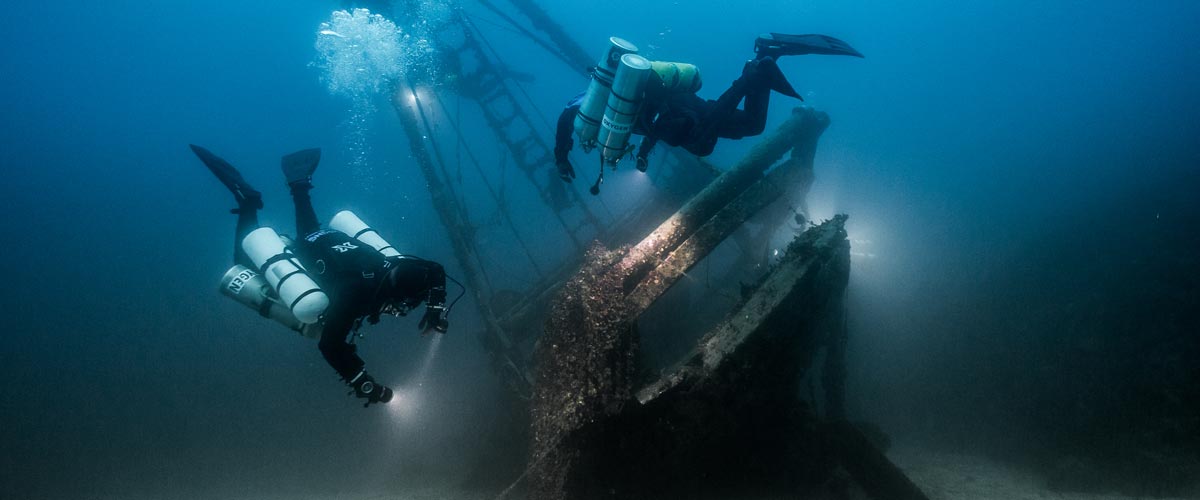
Strategies and procedures
Our strategies, those broad guiding lines tracing the path to follow, from how to approach planning to where, with what, and how we are willing to get there, will be more specific and more practical. Not because they magically become so, but because we will consciously and deliberately frame them that way.
We will establish clear, concise, and realistic procedures. Not only for the undesirable situations that may present themselves but also for those that are part of our dive objectives.
Even though, as technical divers, we often use equipment different from what we were previously accustomed to, it is essential to note that the gear does not make the diver. In a way, we could consider such equipment as the necessary tools to implement what our goal seeks to achieve, according to our strategies and procedures.
Technique plays an important role
We must put our greatest effort into learning and perfecting the different techniques we will be acquiring. Buoyancy, trim, propulsion, cylinder handling, deploying DSMBs and lift bags, valve drills, and more are essential skills we must begin to master to progress in our art. What we cannot do, when we need to do it, can harm us.
Our techniques must be effective and achieve the purpose for which they were devised. But they must also be efficient and require the least resources possible, including the time they take and the effort they demand. Effectiveness and efficiency will prevail over beauty and other considerations that may come to mind, although none of them should be mutually exclusive. A technique executed efficiently and effectively tends to have an inherent beauty.
Refining techniques is a lifelong mission. Some of them will be easy to master from the go; others, on the other hand, will be our life mission and will require many repetitions just to resemble the idea we have in mind of how they should be executed.
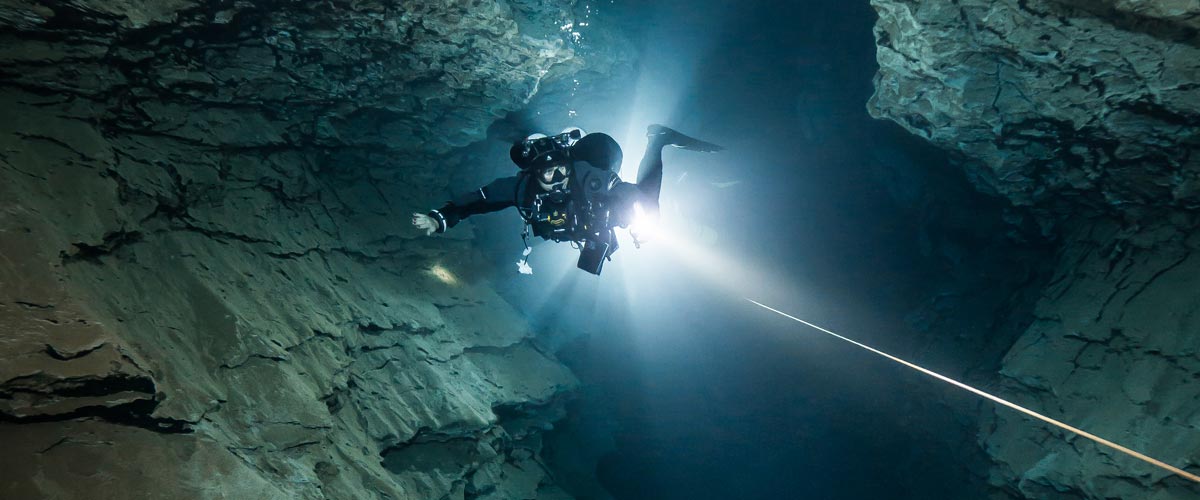
We must consider the environment
Our learning, the needs and musts of the practice we engage in, the experience we gradually gain, our strategies and procedures, and even our equipment and tools change with the environment.
Diving in the ocean, everything about us must be suitable for ocean dives. Conditions there rarely emulate those found in a pool, lake, or river. Variable winds and currents, greater depths, visibility conditions, other divers with uncertain skills around us, marine life, maritime traffic, distance from the coast, and many other factors add complexity and uncertainty.
It is never necessary to master the pool on the first day, but planning and aspiring to gradually cope with the ocean’s conditions is essential.
The cost of good training
We are aware that our resources are often scarce in relation to the possibilities of use we could give them if they were not. To a greater or lesser extent, we are part of the economic reality in which we are embedded.
Fortunately, the cost of good technical diver training is not an entry barrier. Comparing training and equipment costs, we see that the former are generally lower. Yes, lower cost for personalized service, essential to our future
performance and safety, than for a series of mass-produced products that are mere, albeit necessary, tools for an end.
The value of good training
The value of the training we received encompasses a range of characteristics, from emotional and methodological to technical and technological. TDI and its Introduction to Technical Diving course offer a deep and modern approach, with a teaching strategy that aims to create thinking divers, not merely obedient ones.
As technical divers, our knowledge is our primary tool. In this type of activity, what we don’t know can harm us.
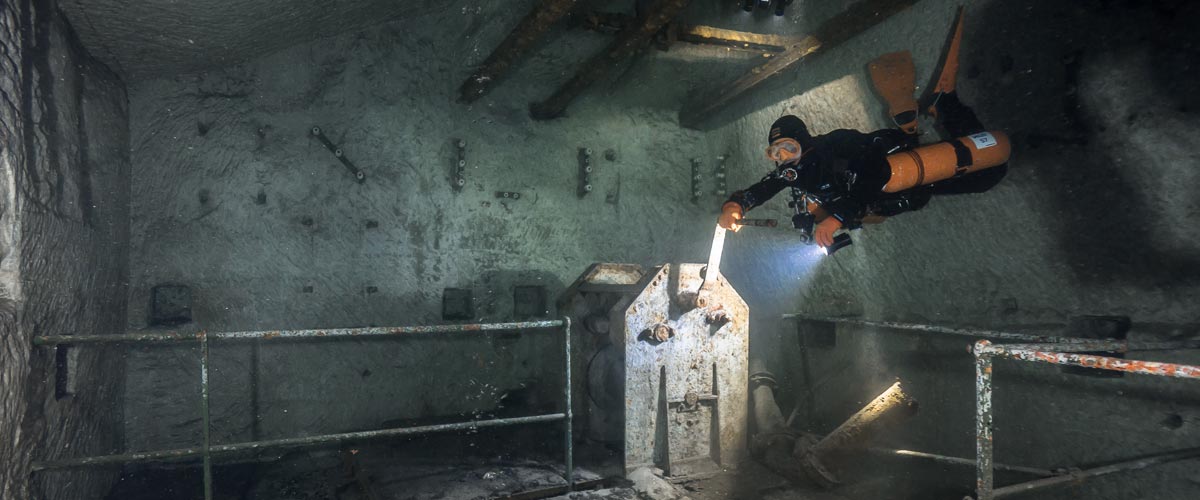
Is this course optional?
Unfortunately, the fact that this Introduction to Technical Diving course is not a prerequisite for any subsequent training is an invitation to consider it optional. And we all know what usually happens to “optional” under budget constraints.
However, this course should be seen as optional only by those divers who are somehow familiar with the use of technical equipment, who have a mindset more in line with the requirements of this type of diving, who plan and execute the dives the proper “technical” way, who know their gas consumption rate, who are not intimidated by non-decompression tables, who feel comfortable using their dive computers, and know the techniques and have at least an acceptable level of buoyancy, positioning, and propulsion. Those can go straight to a more advanced training course, such as TDI’s Advanced Nitrox.
We must ask ourselves whether or not we are in that group.
Remember our goal: to have fun
Recreational diving is our passion. Jumping into the water carrying heavy equipment and having properly dotted our I’s and crossed our T’s have only one ultimate goal: fun. This is the activity we have chosen as a hobby. We must enjoy it; it must give us pleasure and make us vibrate.
Having a good time is not optional!
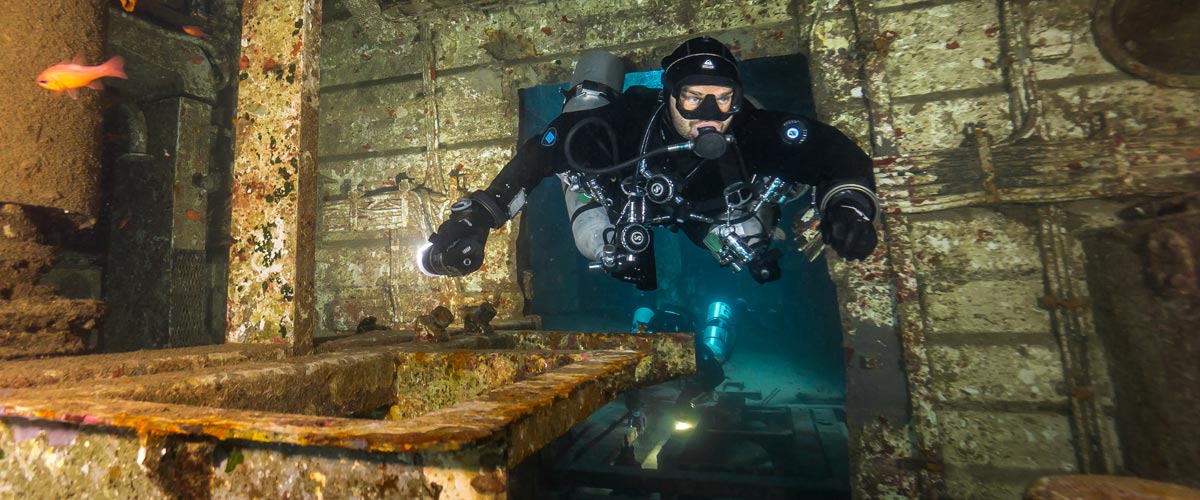
Four opportunities to go pro in 2024 with Dive Friends Bonaire
Dive Friends teaches the Instructor Development Course (IDC) several times a year to students who are eager to share their passion for diving with the world.
Dive Friends is known for the personal approach throughout the course. Their in-house course director will lead the students through every essential step, mentoring them to achieve their fullest potential as a dive instructor.
Applications for the following IDC start dates are now open:
- 20 September
- 29 November
Partnership with Casita Palma
If the student opts for the IDC-Deluxe or IDC-Supreme package, their accommodation will be arranged for them at Casita Palma. This small and quiet resort is within walking distance from Dive Friends Bonaire’s main dive shop location and has everything you need to relax after an intense day of IDC training. Breakfast is included, so the student will always be fuelled and ready for their day.
Contact Dive Friends Bonaire’s Course Director Eddy for more information: [email protected] .
E-Newsletter Sign up!
All the latest news from the world of scuba diving and marine conservation direct to your inbox. Subscribe to the free Scubaverse email newsletter for news, features, competitions, special offers and more!.
Terms and Conditions | Privacy Policy

Scuba Travel – Bella Eriny – Saturday Departure 4th May save £200!
Instagram feed.

Hone your underwater photography skills with Alphamarine Photography at Red Sea Diving Safari in March

Capturing Critters in Lembeh Underwater Photography Workshop 2024: Event Roundup

Murex Resorts: Passport to Paradise!

Creature Feature: Swell Sharks
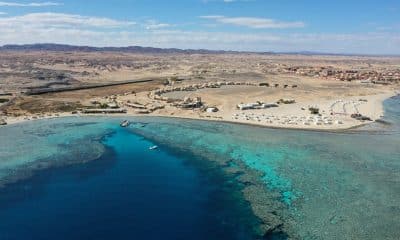
A day in the life of Marsa Shagra with Sea to Sky

Dive into Adventure with Photo Pro Paul Duxfield in North Sulawesi this October

Bare X-Mission Drysuit: Ideal for Both Technical and Recreational Divers

Gear Review: Oceanic+ Dive Housing for iPhone
Change Location
Find awesome listings near you.
New and Improved! Check Out the Save-A-Dive Kit 2.0 for 2023
Videos / New and Improved! Check Out the Save-A-Dive Kit 2.0 for 2023
- April 10, 2023
The 6th video we ever put out taught you how to build your own save-a-dive kit. This is that kit on steroids!
Products featured in this video: Pelican case: https://amzn.to/3mcsI56 Tool roll up: https://amzn.to/3Ulx5XQ Ear drops: https://amzn.to/3MtFdni Hooked o-ring pick: https://amzn.to/43ix4YU D-rings: https://amzn.to/3ZZGJ3z Analyzer: https://amzn.to/3nTwxwh Shearwater batteries: https://amzn.to/40SuV4D
New and Improved! Check Out the Save-A-Dive Kit 2.0 for 2023 I have pretty much upgraded and refined every piece of my save a dive kit from the pelican vault case box to the tools and parts themselves. Also, Ziggy the Husky is here to help! If you’re on a scuba dive trip and you’re having gear issues, you need the right tools on hand to fix your dive gear to keep you in the water longer. Every scuba diver needs a save a dive kit. Expect to self rescue.
Products used to make this video: Tray: https://bit.ly/DRBackscatterTray Action Camera: https://bit.ly/DRGoProHero11 Lights set: https://bit.ly/4300DualTray Main Camera: https://bit.ly/DRCameraHousing
Thanks as always for watching!
James ———————————————– What do we dive? Our full and independently chosen gear choices are here: http://bit.ly/divers-ready-dive-gear ———————————————— Connect with Divers Ready!:
Facebook: https://www.facebook.com/diversready Instagram: https://www.instagram.com/diversready/ Twitter: @diversready ———————————————— FOR MORE INFORMATION or to collaborate with Divers Ready! you can reach out to us via our website:
https://www.diversready.com ———————————————–
These links are affiliate links. Purchases made through these links may earn me a small commission at no additional cost to you and I thank you for your support. Also note I use links from Family-Owned Dive Shops who are smart enough to use Amazon as their e-commerce platform, because it’s 2022.
If you want to take a PERSONALIZED dive course at any level with James from Divers Ready, you can contact us here:
https://www.miamitechnicaldiving.com/bio.html ———————————————– ***Disclaimer: Divers Ready! firmly believes you can not teach someone to dive through the internet. We strongly urge people to ensure they receive dive instruction through an internationally recognized training agency and to dive safely and within the limits of their certification level at all times. Our channel is aimed at already-certified divers looking to further their skills.***
———————————————- In accordance with COPPA laws, please note that content on the channel Divers Ready is not specifically made for, or targeted at, children. ———————————————-
Dive Safe. Dive Often. #scubadiving #diversready #improveinspireexplore
Music used under license. Get yours here! https://www.epidemicsound.com/referral/4gpqqm/
Though we are based in Florida, Hawaii, California, and Michigan have 100 ft and 300 ft ocean and lake underwater coral reef, shipwreck, cave diving, freediving, scuba diving, and closed circuit rebreather trips. To learn full face mask, beginner scuba diver, advanced scuba diver, tech scuba diver, cave diver you can reach out to a professional scuba diver. Everyone should get scuba diving insurance with Divers Alert Network.
We support all types of diving that can be found at PADI, DALLMYD, Dive Talk where they talk about cave divers react, Waterline Academy and BlueWorld TV.
We support all types of diving products, like a full face mask, fins, BCD, dive computer, regulators, closed circuit rebreather, underwater scooter, from many companies like Simply Scuba, Mares, Dive Rite, Cressi, Zeagle, Huish, Hollis, Scubapro, Shearwater, Garmin.
Over the years we have dived the best places like South Africa, Australia Great Barrier Reef, Belize, Honduras, Palau Micronesia, Bahamas, Mexico, Bonaire to see sharks, fish, coral, sites that the National Geographics would go to. We plan to follow Tourpia, Fearless & Fun, Drew Binsky and companies like Expedia, Jetsetter and Mojo Travelers to Egypt Red Sea, Indonesia, Thailand, Galapagos, Maldives, Cozumel and Cocos Islands Costa Rica in the near future.
SHARE THIS VIDEO!
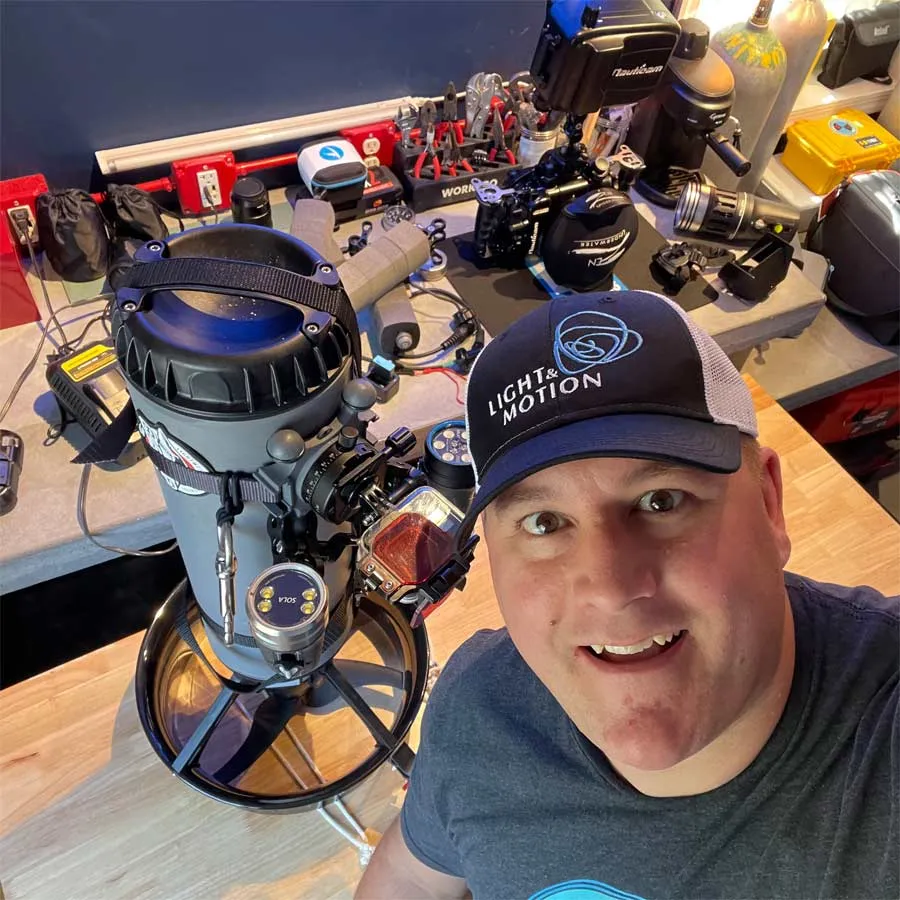
SEE THE PRODUCTS FEATURED IN THIS VIDEO!
Similar content.

Best Advice For Diving Truk Lagoon with Pete Mesley
- April 2, 2024

Episode 35: Our Best Three Shots From 2023 and the stories behind them
- March 25, 2024
BEYOND YOUTUBE
From our travel experiences to training and merch, get involved with Divers Ready and the diving community beyond our Youtube channel.

EXPEDITIONS

JOIN THE DIVERS READY COMMUNITY!
Back to videos.
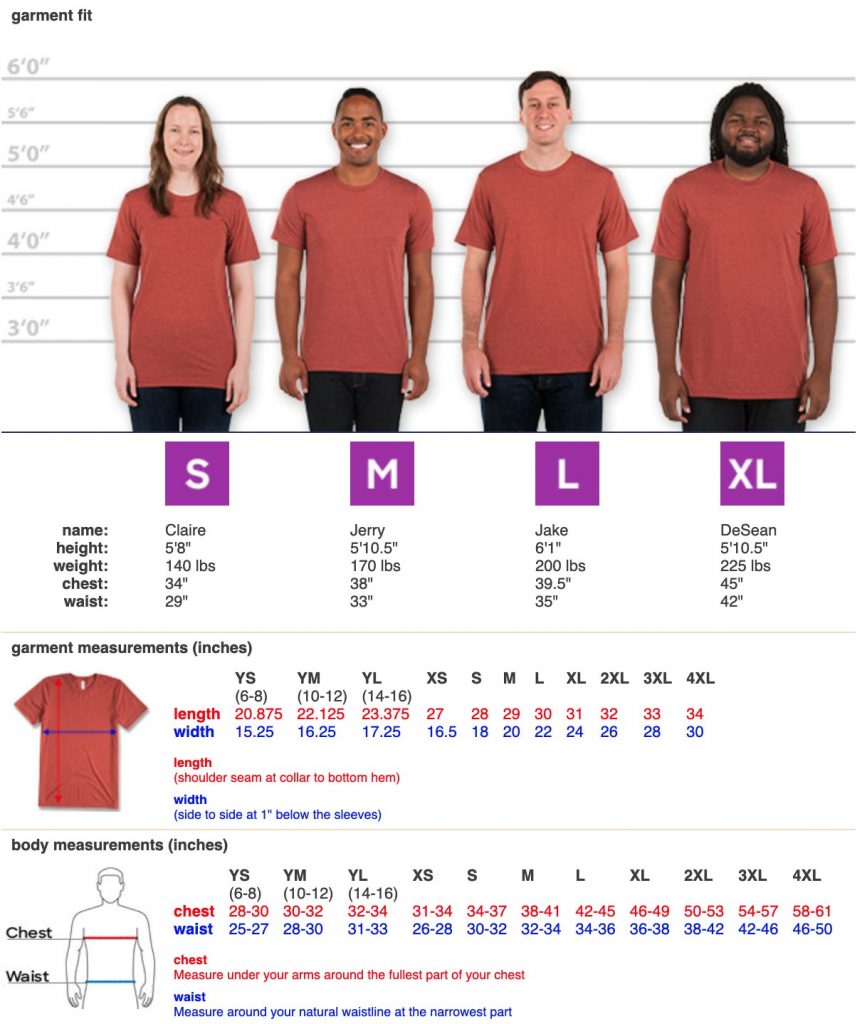
Meet James Blackman
With a career in diving spanning twenty years, James has seen a thing or two in the dive industry. James grew up on the Southwest coast of Britain and learned to dive in the frigid waters of the English Channel. If your first dives were like being placed in a cocktail shaker full of cabbage soup and you come away with a love for the sport, then you know it’s going to be a life-long pursuit.
James spent his twenties in the British merchant marine which afforded him the opportunity to travel to and dive in far flung locales… 177 countries and counting. Between stints onboard a variety of vessels, James used his shore leaves to level up his scuba training… Rescue diver in Tanzania, DM in Indonesia, Instructor in Honduras, Tec Instructor in the French West Indies.
His last ship before moving to a shore-based life style was an expedition ship where he notched up some of his most impressive dives, including briefly holding the world record for most northerly scuba dive… 82 degrees north in the Russian arctic; diving the Amazon river; the Antarctic; and virgin reef systems in Papua New Guinea and Melanesia.
Moving ashore in his early thirties, James took on the role of General Manager for a luxury dive operator in St Martin and never had a dull moment! Hollywood visited the island and called upon James’ underwater skills for on-set safety. When Cat-3 hurricane Gonzalo devastated the area, James switched hats to salvage and public safety diver to help with the recovery.
Scuba Diving has given so much to James in his life… and first on that list is his brilliant wife Karina whom he met whilst teaching her AOW class! Yes, that old cliché! James and Karina are also business partners and co-owners of two power-house scuba brands. Miami Technical Diving has become the premiere scuba training facility in South Florida. Tired of seeing other dive shops compete in a ‘race to the bottom,’ James decided his model for teaching scuba would focus on keeping the quality as high as possible; using the best gear possible; teaching beyond the minimum standards on a 1-to-1 student-to-instructor ratio. The fullness of the MTD training calendar shows that people – student divers – prefer to receive premium, quality tuition, as opposed to cheap and fast.
James is the personality and knowledge broker behind ‘Divers Ready!’ a super influential Scuba Diving YouTube channel , website and brand. In just a year, Divers Ready! has become the fastest growing You Tube channel in the Scuba Diving niche, with 1000s of new divers joining every month. Their weekly videos range from Mouthpiece Mondays – where James shares his insider knowledge and opinions about controversial topics in the dive industry – to practical ‘hints & tutorial’ style videos, all with one simple goal in mind – to make you a better diver!
James and Karina started small group luxury dive trips for the Divers Ready! audience.
James and Karina live in Miami, FL with their rambunctious dogs; Ziggy The Husky and Bonham the Mutt, and their Maine Coon cat Foxy, who remains unimpressed.
Click here for Online Shop
- Online Shop
- Why Buy Scuba Equipment?
- Treat Yourself
- Holiday Diver Must-Have Gifts
- Great Gifts for Scuba Divers
- The Adrenaline Junkie Gift Ideas
- Best Gifts For Freedivers
- The Hunter Gift Guide
- The Tech Diver Gift Guide
- Snorkel Family Gift Guide
- Start Them Young
- The Photographer Gift Guide
- The Environmentalist Gift Guide
- The Tankless Diver
- Top Recreational Scuba Gear
- Buying a Wetsuit or Drysuit
- Dive Hood Buying Guide
- Dive Gloves Buying Guide
- Scuba Fins Buying Guide
- Buying Dive Boots
- Buying the Best Dive Mask
- Buying a Snorkel
- Dive Light Buying Guide
- Buying a Dive Computer
- Dive Compass Buying Guide
- Buying a Scuba Cylinder
- Buying an Emergency Air Source
- Buying Dive Regulators
- Buying a Scuba Diving BCD
- Buying a Dive Knife
- Dive Reel Buying Guide
- Dive Bag Buying Guide
- Watertight Hard Cases Buying Guide
- Must Have Tools for a Safe Dive
- Underwater Noisemaker Buying Guide
- Buying Scuba Diving Hoses
- Dive Weights Buying Guide
- Scuba Diving O-Rings
- Valentines Day Gifts for Scuba Divers
- Scuba Doctor Holiday Gift Guide 2021
- Scuba Doctor Holiday Gift Guide 2020
- Scuba Doctor Holiday Gift Guide 2019
- Scuba Doctor Holiday Gift Guide 2018
- Scuba Doctor Holiday Gift Guide 2017
- Scuba Doctor Holiday Gift Guide 2016
- Scuba Doctor Holiday Gift Guide 2015
- Scuba Doctor Holiday Gift Guide 2014
- Scuba Doctor Holiday Gift Guide 2013
- Scuba Mask Features
- Fixing Underwater Vision Problems
- Avoiding Mask Squeeze
- Wetsuit Donning Guide
- Snorkel Features
- BCD Features
- Regulator Features
Save a Dive Kit
- How to Deploy a SMB
- How to Thread a Weight Belt Buckle
- How to Thread a Tank Cam Band Buckle
- Perfect Scuba Diving Weighting
- Buoyancy Control
- Nitrox Fills and O2 Cleaning Cylinders
- Scuba Diving Gas Analysis
- Assembling Twin Cylinders
- Scorkl Dangers
- What Snorkelling Gear Do You Need
- Snorkelling Fins Buying Guide
- How to Familiarise Your Kids to Snorkelling
- Snorkelling Limits and Safety Precautions
- How Much Lead Weight Should I Wear?
- Snorkelling Holiday Gift Guide 2019
- Snorkelling Holiday Gift Guide 2018
- Using Your Snorkelling Gear
- Snorkelling with a Moustache
- How to Enter and Exit the Water
- Goggles vs Masks
- Full Face Snorkel Mask Dangers
- Best Underwater Cameras and Housings
- Recommended Lenses for Underwater Photography
- Underwater Camera Buying Help
- Underwater Camera Arms and Trays
- Port and Gear Chart Links
- Camera Housing Maintenance
- Prescription Goggles for Swimming
- Beginners Spearfishing Gear
- Essential Spearfishing Gear
- Introduction to Hookah Diving
- Selected Product Range
- Rebreathers
- Holiday and Gift Giving
- Scuba Diving Checklist
- Guided Dives With Weedy Seadragons
- Guided Dives With Seahorses
- Guided Dives With Blue-Ringed Octopus
- Guided Dives With Giant Spider Crabs
- Guided Dives With Nudibranchs
- FAQs About Melbourne Diving
- Litres, Metres and Bar
- Dive Instructors
- Discover Local Diving
- Learn to Dive in Melbourne
- Technical Diving
- Refresher Course
- PADI Discover Scuba Diving
- PADI ReActivate Scuba Refresher
- PADI Open Water Diver Course
- PADI Advanced Open Water Diver
- PADI Enriched Air Diver (Nitrox)
- PADI Digital Underwater Photographer
- PADI Night Diver
- PADI Peak Performance Buoyancy
- PADI Deep Diver
- PADI Wreck Diver
- Course Equipment
- Dive Course FAQs
- Scuba Diving Myths
- Diving Medical
- Guidance On Coronavirus
- Disinfecting Your Diving Equipment
- Dive Site Selection
- Wind Factors For Diving
- Weather, Tides, Conditions etc.
- AIS Marine Traffic Melbourne
- Dive From Your Own Boat in Melbourne
- Boat Diving Safety
- Boat Diver Safety Briefings
- Using a Dive Float and Flag
- Diving in Melbourne Currents
- Diving the Back Beaches
- Diving in Bass Strait
- Diving in Southern Ocean
- Diving Near The Rip
- Underwater Hand Signals
- Diver Rope Signals
- Marine Flag Signals
- Marine Radio Operation
- Diver Emergency
- Melbourne Dive Sites Map
- Melbourne Dive Site GPS Marks
- Dive Sites Index
- Melbourne Pier Dives
- Melbourne Shore Dives
- Melbourne Wreck Dives
- ex HMAS Canberra Wreck Dive
- Victorian Ships Graveyard Wreck Dives
- J Class Submarine Wreck Dives
- Port Phillip Heads Shipwreck Dives
- Port Phillip Wreck Dives
- Phillip Island Wreck Dives
- Underwater Shipwreck Discovery Trail
- West Coast Shipwreck Trail
- Victoria Wreck Dives
- Victorian Shipwreck Protected Zones
- Melbourne Boat Dives
- Melbourne Bommie Dives
- Melbourne Drift Dives
- Melbourne Reef Dives
- Melbourne Wall Dives
- Melbourne Abalone Dives
- Melbourne Cray Dives
- Melbourne Scallop Dives
- Melbourne Sea Urchin Dives
- Melbourne Other Dives
- Phillip Island Dives
- Wilsons Promontory Dives
- Recent Dive Sites
- Dive Site Help
- Melbourne Snorkelling Sites
- Snorkelling the Intertidal Zone
- Melbourne Spearfishing Sites
- Victorian Marine Protected Areas
- Great Southern Reef
- Giant Spider Crabs Melbourne
- Weedy Seadragons Melbourne
- Facebook for Melbourne Divers
- Sydney and NSW Dive Sites
- 8th Wonder Fantasy Hole
- Bikini Atoll Nuclear Target Fleet
- From Hermes To Saratoga
- Caverns Measureless to Man
- Liability Waivers
- Choosing a Reliable Online Scuba Store
- Lessons To Be Learnt
- USS Saratoga (CV-3)
- Bikini Atoll 2005
- Breathing Gas Quality
- Cylinder Testing
- Trimix Comes To Rye, Victoria
- Channel Deepening
- Tales From The Deep
- Trouble Brewing at the Bottom of the Bay
- Victorian Diving
- How to Catch Sea Urchin
- Love Your Local Diving
- How To Catch Crayfish
- How to Catch Abalone
- How To Cook Crayfish
- Diving the Nuclear Ghost Fleet at Bikini Atoll
- GPS Conversions
- Frequently Asked Questions
- Scuba Equipment Manuals
- Dive Charters
- Diving Related
- Enviromental Groups
- Magazines and Periodicals
- Manufacturers and Distributors
- Organisations and Institutions
- Underwater Photography
- Melbourne Web Cams
- Melbourne Boat Launching Ramps
- Scuba Diving Glossary
- Dive Forums
- Far North Coral Sea Exploration Brochure
- Melbourne Boat Diving Schedule
- Divers Alert Network
- Regulator Servicing
- Cylinder Oxygen Cleaning
- BCD Servicing
- Dive Computer Battery Change
- How Often Should I Get My Dive Gear Serviced?
- Pre-Season Checklist - Regulators
- care-pre-season-everything-else.htm
- Buoyancy Compensator Care
- Regulator Care
- Dive Computer Care
- Scuba Cylinder Care
- Wetsuit Care
- Drysuit Care
- How to Effectively Maintain Your Drysuit
- Dive Knife Care
- Dive Mask Care
- Gear Bag Care
- Catch Bag Care
- Snorkel Care
- Dive Light Care
- Caring For Scuba Diving Hoses
- Diving Retractor Care
- Wetsuit and Drysuit Repairs
- Service Policy
- Scuba Safety Alerts
- Bespoke Scuba Fitting Service
- Scuba Cylinder Testing
- Nitrox Calculator - Requested Mix
- Nitrox Calculator - Top Up Mix
- Trimix Calculator - Requested Mix
- Trimix Calculator - Best Mix
- Trimix Calculator - Top Up Mix
- Holiday Dive Gear Hire
- Coronavirus COVID-19 Restrictions
- Meet The Team
- Why We Are Different
- Online and Local
- Everyday Low Prices
- Government and Education Orders
- Specialty Store vs Big Box Store
- Dive Facilities
- Environmental Policy
- OHS Policy and Risk Assessment
- Work With Us
- Mad For Marine Life Photo Contest
- Scuba Doctor Newsletters
- Traditional Owners
- Opening Hours
- Visit Our Rye Store
- Privacy Policy
- Legal Notices
- Sharing at The Scuba Doctor
- Search this site
- Victorian Dive Sites Map
- Scuba Equipment Rental
Home :: Advice :: Trusted Scuba Advice :: Save a Dive Kit
Top 10 best scuba regulators.
This selection of the Top 10 Best scuba diving regulator sets covers the needs of new divers, hunter gatherer divers and discerning recreational divers, plus deep and technical divers. You'll breathe easily with all of these regs, plus they're all CE250 certified.
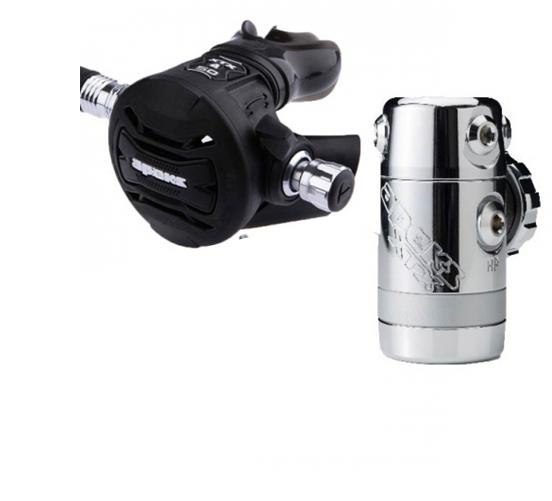
Apeks XTX50 Regulator Set - DIN or Yoke
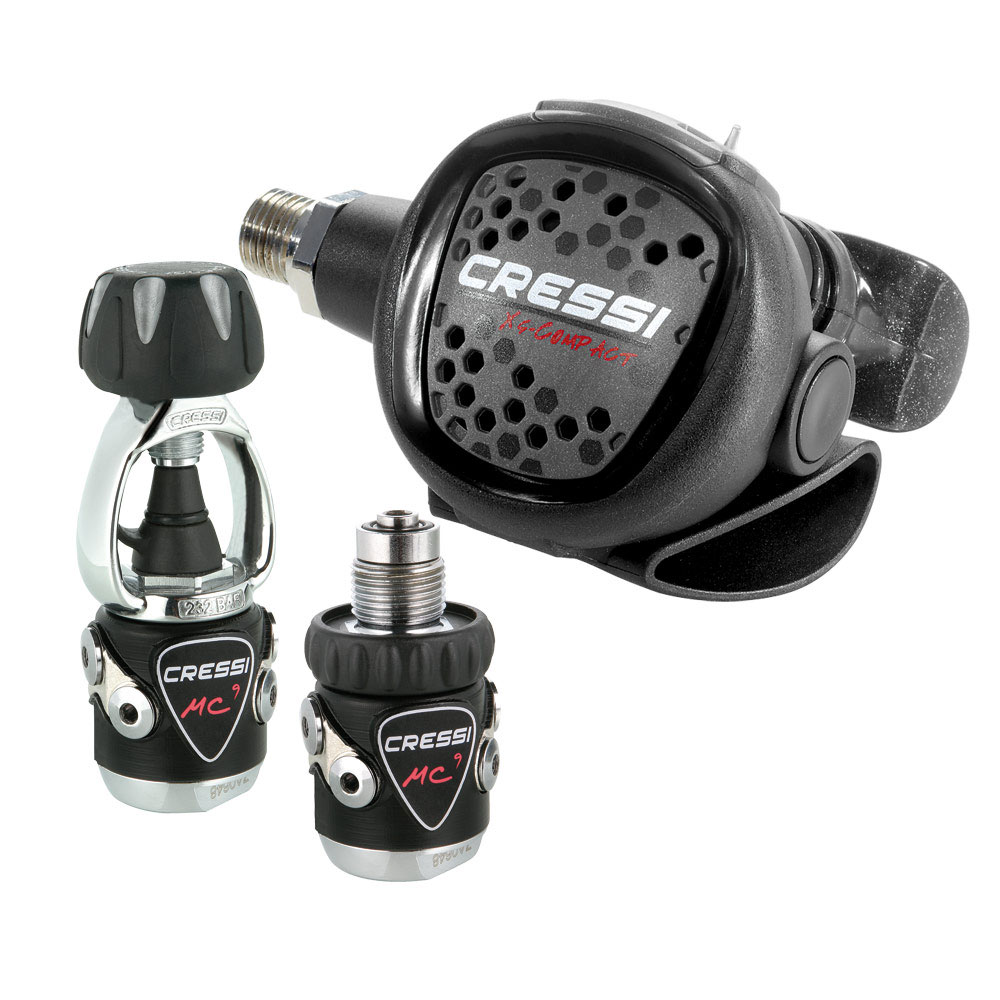
Cressi MC9 XS Compact Regulator Set - DIN or Yoke
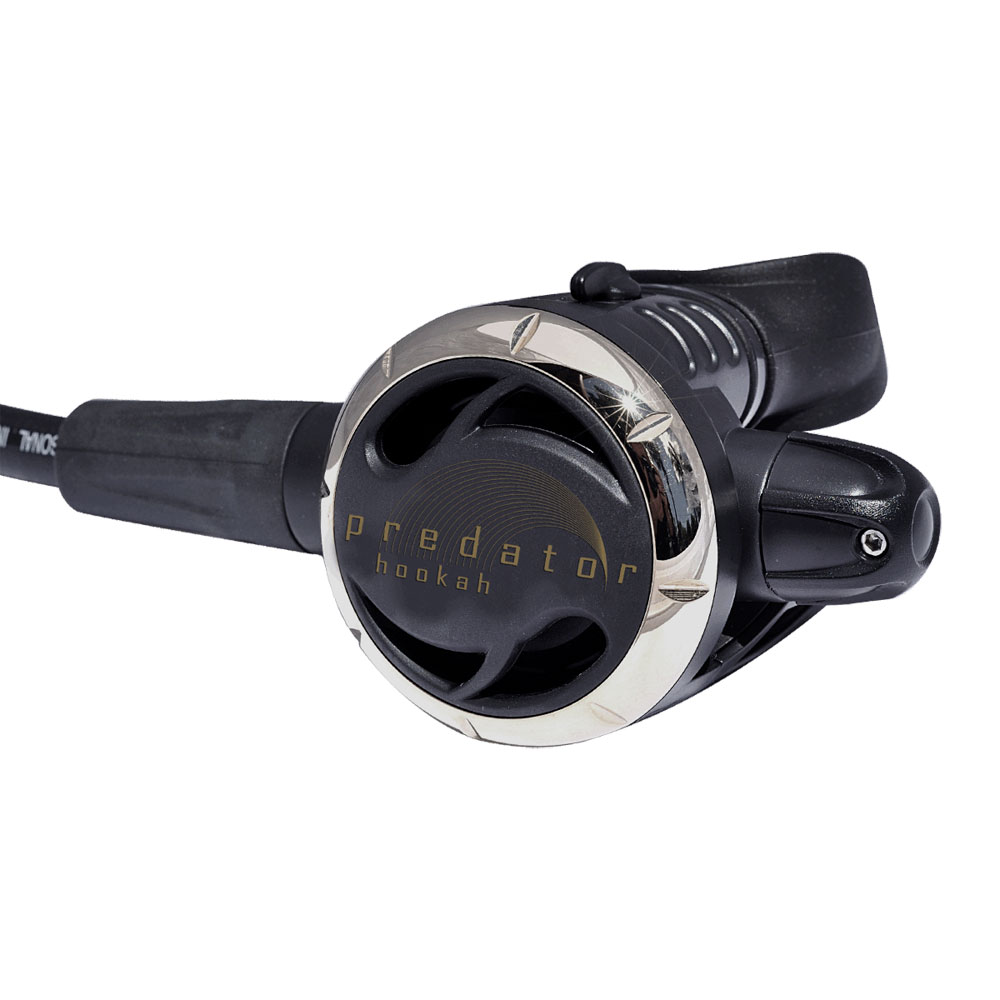
Ocean Design Predator Hookah 2nd Stage Regulator
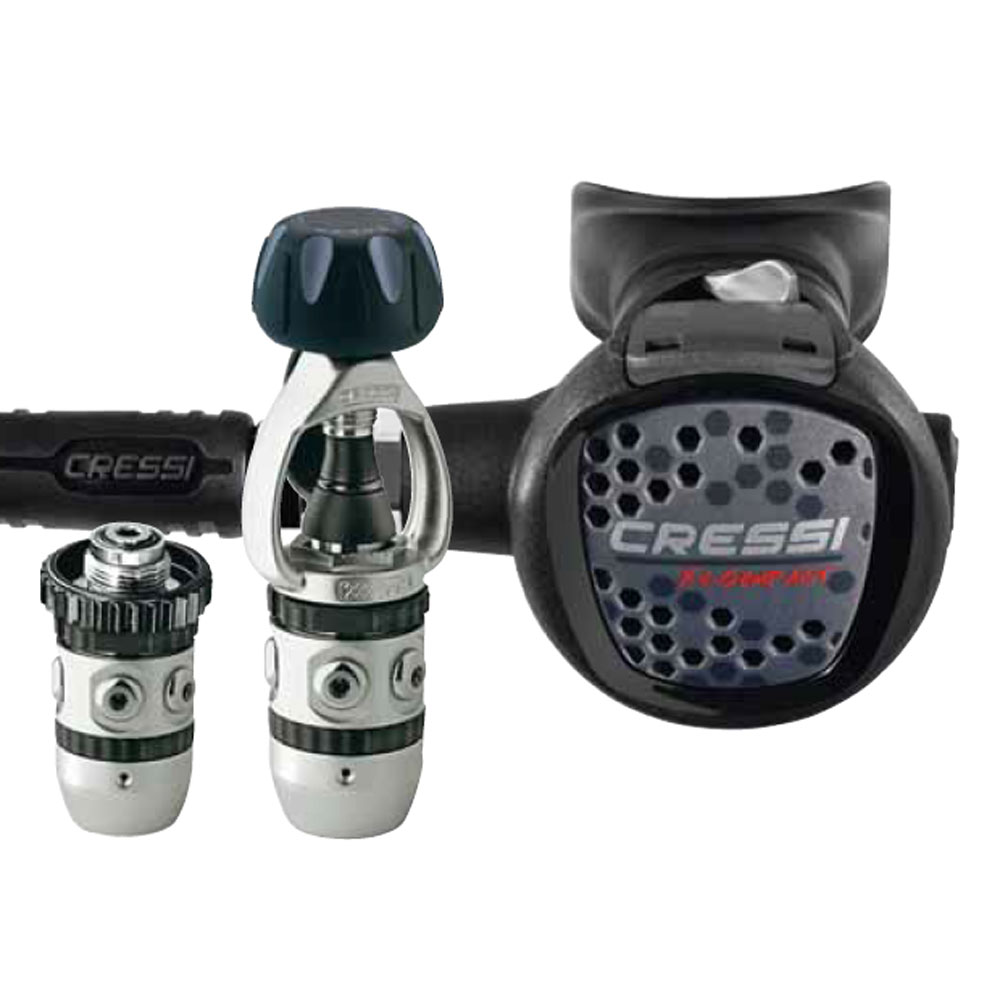
Cressi AC2 XS Compact Regulator Set - DIN or Yoke
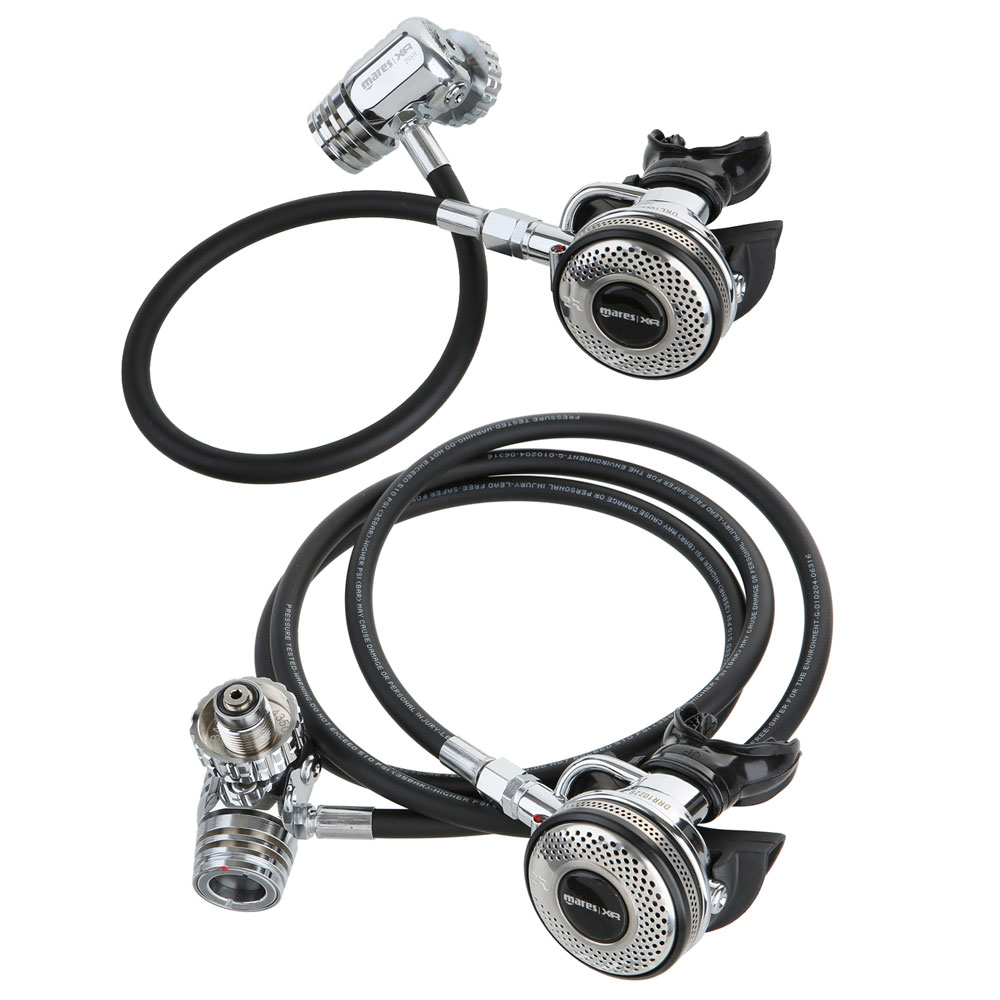
Mares XR DR 25X Tech Regulator Set
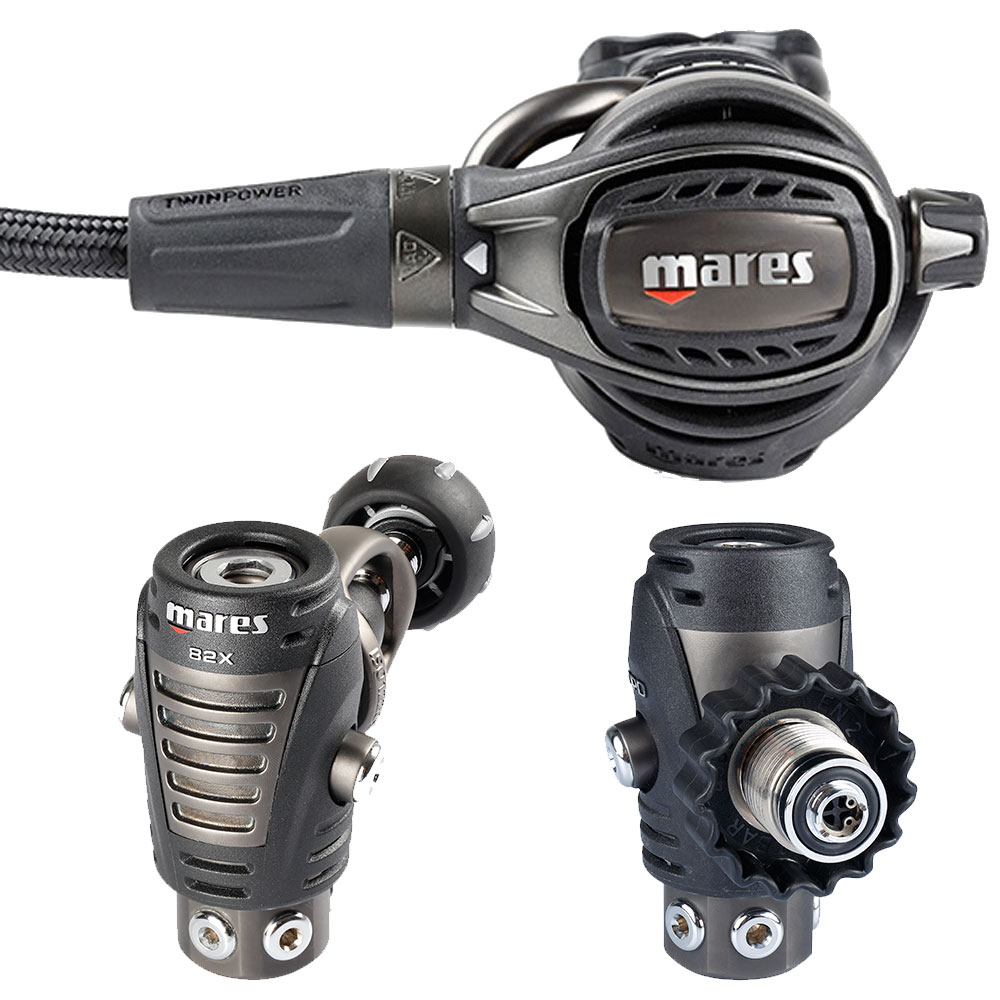
Mares Epic ADJ 82X PVD Regulator Set - First and Second Stage
If you're not prepared, you're not diving
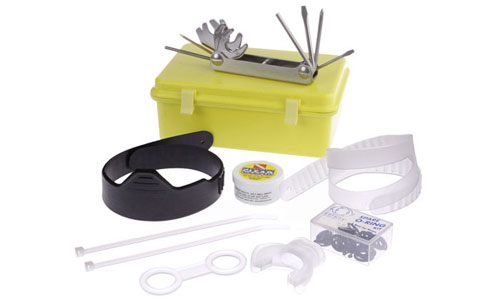
Scuba diving is a fantastic sport, but sometimes things can and do go wrong with equipment from time to time, even for the most experienced of scuba divers and snorkellers. Have you ever been heading out for a long awaited dive and discovered that your mask strap has snapped en route? Or the water is really choppy and your dive companion is greener than a jar of pond algae? Yes, these things do happen!
Thankfully, although minor issues such as these can seriously stuff up a dive, being prepared for every eventuality is the best way to minimise the disruption caused by motion sickness and minor equipment malfunctions. Carrying a pre-packaged 'save a dive kit' is always a sensible approach, but what are the key items you should pack?
Save a Dive Kit Essentials
The exact contents of a Save A Dive Kit aren't universal. What you carry should reflect the gear you have, the diving you do, and where you go to dive. Nonetheless, some things will be in most, if not all, save a dive kits.
Spare Parts — it is good idea to keep spare parts for your equipment at all times, just in case a strap breaks or a hose splits when you put the first pressure on it. You should check your equipment regularly, which will enable you to spot when things are wearing out and replace them if necessary, but keeping a few essential bits such as fin straps , a mask strap and spare dive hoses may keep you in the water as opposed to being left behind to watch your dive mates from the boat.
Mask Equipment — always carry a spare mask or Mask Strap , just in case something breaks. If you take a snorkel diving, then you also need a spare snorkel keeper .
Fin Equipment — always carry a spare Fin Strap , just in case one breaks. You might like to consider including a set of Fin Buckles as well.
Regulator Mouthpiece — your regulator is an essential part of your dive kit. If your primary 2nd stage regulator or octopus regulator mouthpiece is damaged or holed then you're either not going to dive, or you'll be diving very uncomfortably or dangerously. Mouthpiece sizes can vary, so please make sure you have the right size mouthpiece for your regulators.
O-rings — O-rings are pretty important in scuba diving. From tank O-rings and dive light O-rings , to camera O-rings and valve O-rings , the time will come when you need a replacement in a hurry, so pack a few spares. Also make sure to include some silicone grease so that you can lubricate your O-rings properly. A suitable set of brass O-ring picks is often handy. See the O-Rings and Lubricants section of our online dive shop for some top choices.
Zipper Wax — a jammed zipper is highly irritating, so keep some zipper lubricant handy at all times to ensure your dry or wetsuit zipper functions as intended. Popular choices are Gear Aid Zip Care Zipper Cleaner and Lubricant (60ml) and Northern Diver Zip Wax . A tooth brush makes a great tool to clean the zipper. Spare talc like Northern Diver Seal Saver Talcum Power is also handy for dry suit divers.
Dry Suit Glue — no matter how expensive your dry suit was, it is not 100% immune to wear and tear, and sometimes accidents happen. So if you put your dry suit on and discover a tear in the leg, don't panic. Simply pull some dry suit glue , like Gear Aid Aquaseal + FD Repair Adhesive , from your emergency kit and fix it.
Mask Anti Fog — if you haven't properly cleaned your mask then fogging can become a serious issue and ruin your dive. Sometimes you can't rely on spit to keep your mask free from fog and a more effective mask anti-fog agent can be more effective. See Gear Aid Antifog Sea Drops Liquid Drops .
First Aid Essentials — all scuba divers should carry a first aid kit as standard. Make sure your first aid kit also includes waterproof band aids / plasters , sunburn cream , antihistamine , antiseptic cleanser , sting aid , chap stick , eye and ear drops , and pain killers too. We start with the large DAN first aid kit that comes in a Pelican case, and then supplement it.
Motion Sickness Pills — nothing ruins a planned dive more than the overwhelming sensation you are about to throw up. Thankfully, keeping some trusted motion sickness pills to hand will settle your stomach and prevent any nasty episodes of motion sickness.
Spare Batteries — even with a modern dive computer's low-battery warning, a dive computer battery can still make or break a dive day. Carry a spare of whatever battery your dive computer takes, plus the tool to change the battery, if needed. Spares are also useful for dive lights batteries . Camera batteries don't last forever, so why risk missing out on some fabulous underwater snaps? A camera care kit may be worth packing if your pictures are important to you.
Tools — keep a set of scuba multi-tools handy, just in case you need to make a few emergency repairs to your equipment (assuming you know how to!). Hex wrenches that fit 1st stage plugs, wrenches for dive hoses , and appropriate flat head and phillips screw drivers are always handy. Make sure your tool kit contains some side/angle cutters , plus at least one adjustable wrench . An 8 mm Allen key to remove DIN/Yoke valve inserts is also very handy. See the Dive Tools section of our online dive shop for some top tool choices.
MacGyver Essentials — Sometimes you might just need to solve complex problems by making things out of ordinary objects, just like MacGyver. So you're going to need zip/cable ties , duct tape , electrical tape and bungee/shock cord . It's always handy to have side/angle cutters or nail clippers to cut off zip tie ends, plus scissors in your tool kit when using these materials. Swivel bolt snaps and double ended bolt snaps can often get you out of a tricky situation.
Spare/Copy Certification Card — if you leave you cert card at home, keeping a spare certification card, or copy of one, in your save a dive kit might be the only way you get to dive in some circumstances. We also suggest you take photos of both sides of your certification card and keep them on your smartphone.
Travel Kit Add-ons
When travelling on dive holidays, or to more remote destinations, we tend to supplement our local save a dive kit with a few more items.
Dive Hoses — a spare HP Hose , Regulator Hose , and Inflator Hose , plus the air spools used to connect our SPGs to HP hoses are added because you can't know that the locals will have the ones you need. We also include some Schrader Valves and a Schrader Valve Tool for fixing problematic inflator hose leaks.
DIN to Yoke Adaptor — we dive with DIN regulators, so when travelling we carry a DIN to Yoke Adaptor . While it's rare these days, it's still possible that where you're going may only have Yoke valve on their dive cylinders, and the adaptor will get you diving.
Inflator Kits — we always take a Power Inflator Inlet Valve Cartridge Assembly plus an Inflator Service Tool with O-Ring Kit with us on long dive trips. Some people prefer to just take a whole BCD Power Inflator Unit suitable for their BCD.
What Shall I Keep My Kit In?
Unless you keep everything in one place, you will inevitably forget something vital each and every time you head out of the door for a diving trip. A medium sized plastic or metal box will be more than sufficient for the purpose and is the perfect receptacle for keeping everything dry. It also helps to maintain a checklist of what's in the kit, which you can add to if necessary. Tak a look at the Waterproof Hard Cases we have available.
Of course it's easy to go way overboard with save a dive kits. Indeed, if you carried everything that some say you'd need, your save a dive kit would take up more space than your actual dive kit. You may think that you don't need some of these items because you don't know how to use the tools, or make the replacements. However, there's likely to be someone around who does and can, but if you don't have the items in your kit, then they won't be able to help you.
SALE and CLEARANCE [more]
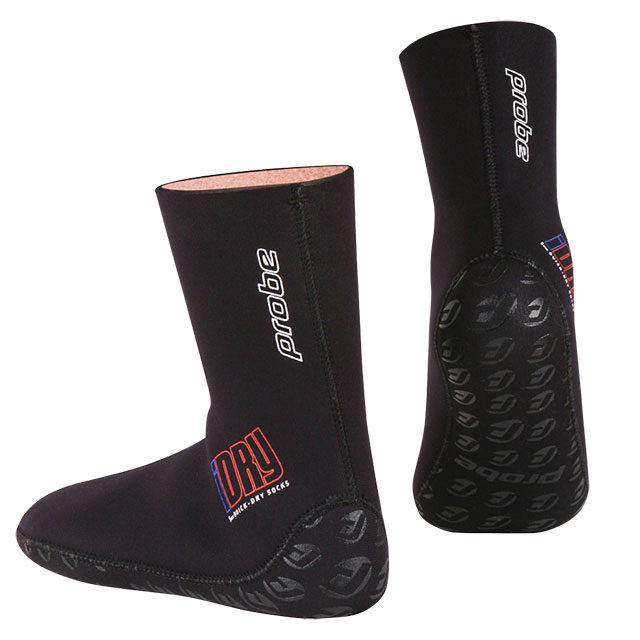
New Products [more]

Brands [more]

Copyright © 2005-2022 by The Scuba Doctor Australia , ABN 88 116 755 170. All rights reserved. tel. +61 3 5985 1700 :: email. [email protected] :: Web site by it'sTechnical 2022

- Accessories & Gifts
Save A Dive Kit
Leviathan scuba.
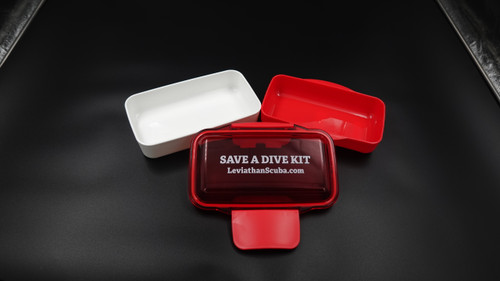
- Description
Sturdy, lightweight and a perfect size, this Save A Dive kit is ready to hold your essentials. Two stacked compartments keep your gear organized. The locking lid makes the top compartment watertight. Includes a suggestion list. 7.5" x 5" x 3.5"
Videos Hide Videos Show Videos

Discover Save a Dive Kit
Subscribe to our channel: http://www.youtube.com/leviathanscub...
- Related Products
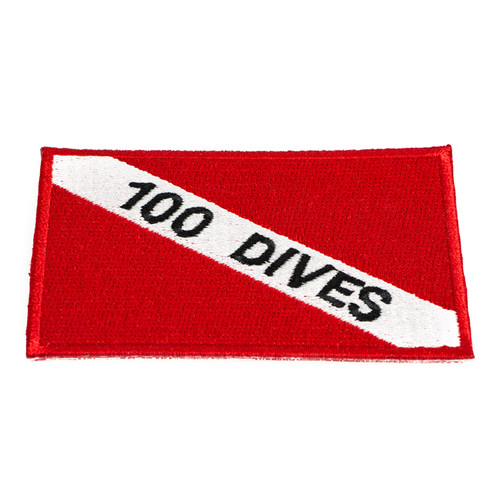
Dive Patches International
Dive Flag 100 Dives Patch

Dive Flag 50 Dives Patch

Dive Heart Shaped Patch
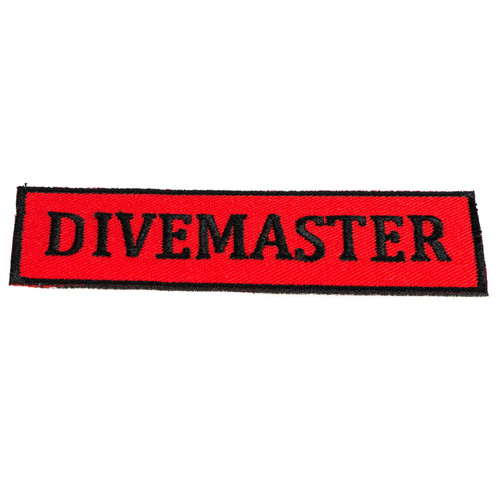
Dive Master Patch

Nitrox Dive Flag Patch

The Ultimate Guide to Airplane Amenity Kits: Fly in Style and Comfort
- Airplane amenity kits can make or break your in-flight experience
- 85% of travelers consider amenity kits important when choosing an airline
- Airlines use amenity kits to differentiate themselves and create memorable experiences
- We explore the history, contents, and best kits available on today's flights
You might also like: Airplane video streaming
A Brief History of Airplane Amenity Kits
Believe it or not, amenity kits have been around since the 1950s ! Trans World Airlines (TWA) was the first to introduce them, featuring items such as playing cards and cigarettes. Since then, they've evolved into an essential part of the flying experience.
Why Airplane Amenity Kits Matter
According to a survey by Skyscanner, a whopping 85% of travelers consider amenity kits an important factor when choosing an airline. As Brian Kelly , founder of The Points Guy, puts it, "Amenity kits are a way for airlines to differentiate themselves and create a memorable experience for passengers."
What's Inside the Ultimate Airplane Amenity Kit?
While the contents of amenity kits may vary by airline and class, some essentials are commonly found:
- Toothbrush and toothpaste
- Socks or slippers
- Comb or hairbrush
- Pen Some airlines go the extra mile, offering luxury brands, unique items, or even partnering with fashion designers for their amenity kits.
The Best Airplane Amenity Kits to Look Out For
As an experienced travel journalist, I've had the pleasure of testing many amenity kits. Here are my top picks for the best airplane amenity kits, guaranteed to make your next flight a more enjoyable experience:
- Emirates First Class
- Qatar Airways
- Qsuite ANA First Class
- Singapore Airlines First Class
- Cathay Pacific First Class
A Deeper Dive into the Best Airplane Amenity Kits
Now that we've shared our top picks for the best airplane amenity kits, let's take a closer look at what makes each of these kits stand out:
1. Emirates First Class
Emirates is renowned for its luxurious in-flight experience, and their amenity kits are no exception. The airline partners with luxury brand Bvlgari to create exquisite leather pouches filled with a selection of Bvlgari toiletries, including body lotion, aftershave balm, and eau de cologne. You'll also find essentials like a grooming kit, a plush eye mask, and comfortable socks. As a bonus, Emirates offers a separate set of skincare products for men and women, catering to each gender's specific needs.
2. Qatar Airways Qsuite
Qatar Airways' Qsuite passengers are treated to BRIC'S amenity kits, an Italian luxury brand known for its high-quality travel bags. The amenity kits include exclusive Monte Vibiano Vecchio skincare products, such as facial mist, lip balm, and hydrating cream. Additionally, you'll find sleepwear designed by The White Company, a luxurious British brand, ensuring you stay comfortable during your flight.
3. ANA First Class
Japan's ANA offers a sleek, sophisticated amenity kit designed by Globe-Trotter, a British luxury luggage company . The kit includes items from The Ginza, a renowned Japanese skincare brand, such as moisturizer, facial mist, and lip balm. ANA also provides a unique touch with its signature "Samue" loungewear, a modern take on traditional Japanese garments, ensuring a comfortable and stylish in-flight experience.
4. Singapore Airlines First Class
Singapore Airlines' amenity kits are designed in collaboration with French luxury brand Lalique. The kit includes Lalique-branded toiletries, such as lip balm, hand cream, and facial mist, as well as a scented candle to help you relax during your flight. The airline also offers Lalique-designed sleepwear, slippers, and a plush eye mask, ensuring a comfortable and luxurious experience.
5. Cathay Pacific First Class
Cathay Pacific's first-class amenity kits are created in partnership with luxury brand Aesop. The kits come in a stylish, minimalist pouch and include Aesop skincare products, such as hand cream, lip balm, and face cream. Essentials like a toothbrush, toothpaste, and eye mask are also provided, along with soft, cozy socks.
The Future of Airplane Amenity Kits
As the airline industry continues to evolve, we can expect airplane amenity kits to follow suit. Airlines are increasingly focusing on sustainability, with some companies turning to eco-friendly materials and refillable containers for their kits. Additionally, collaborations between airlines and luxury brands or designers are becoming more common, resulting in unique and high-quality kits for passengers.
Budget-Friendly Alternatives
Not flying first class or with an airline known for its amenity kits? Don't worry! You can still create your own budget-friendly amenity kit to ensure a comfortable flight. Here are some essentials to pack:
- Travel-sized toothbrush and toothpaste
- Travel-sized hand sanitizer and lotion
- Travel-sized facial mist
- Compact hairbrush or comb
- Tissues or wet wipes
By packing these items in a small, reusable pouch, you'll be able to create a personalized amenity kit tailored to your needs and preferences.
Amenity Kits for Children and Families
If you're traveling with kids, some airlines provide special amenity kits designed to keep young passengers entertained and comfortable throughout the flight. These kits may include items like:
- Coloring books and crayons
- Small toys or puzzles
- Child-sized eye masks and earplugs
- Travel-sized toiletries suitable for children
Before booking your flight, research which airlines offer family-friendly amenities to ensure a pleasant experience for passengers of all ages.
Personal Insights and Insider Tips
- Always check which amenities your airline provides before your flight. This will help you pack accordingly and avoid any surprises.
- Don't be shy about asking for extra items if you need them. Flight attendants are usually happy to help.
- Save your favorite items from amenity kits for future flights or to use at home.
1. Are amenity kits provided on all flights?
Amenity kits are typically provided on long-haul flights, especially in premium classes. However, some airlines may offer a limited selection of amenities in economy class as well.
2. Can I keep my airplane amenity kit?
Yes, airplane amenity kits are meant to be kept and used by passengers. Feel free to take them with you when you disembark.
3. Are all amenity kits the same across different airlines?
No, amenity kits can vary greatly between airlines, as well as between different travel classes within the same airline. Some airlines may also collaborate with luxury brands or designers for unique, high-quality kits.
4. Can I request a specific amenity kit when booking my flight?
Generally, you cannot request a specific amenity kit, as the kits are predetermined by the airline and travel class. However, you can research which airlines offer the best kits before booking your flight.
5. Are airplane amenity kits eco-friendly?
Many airlines are taking steps to make their amenity kits more eco-friendly by using sustainable materials and reducing plastic waste. Some airlines even offer kits made entirely from recycled materials.
In Conclusion
Airplane amenity kits are a small but significant part of your travel experience. With the right kit, you'll feel pampered and well-rested, ready to hit the ground running at your destination. So, next time you book a flight, pay attention to the amenity kit offerings – it just might make all the difference!
Airplane amenity kits can significantly enhance your in-flight experience, especially on long-haul flights. From luxury brand collaborations to eco-friendly initiatives, airlines are continuously raising the bar for in-flight comfort. Whether you're fortunate enough to experience one of the top amenity kits or choose to create your own budget-friendly alternative, prioritizing your comfort and well-being during air travel is essential. Happy flying!
Also check out: Airplane fashion trends
- CNN Travel


Turn Your Curiosity Into Discovery
Latest facts.

The Best AI Photo Editor of 2024 A Comprehensive Review

6 Facts You Didnt Know About Ecommerce Call Center Outsourcing
40 facts about elektrostal.
Written by Lanette Mayes
Modified & Updated: 02 Mar 2024
Reviewed by Jessica Corbett

Elektrostal is a vibrant city located in the Moscow Oblast region of Russia. With a rich history, stunning architecture, and a thriving community, Elektrostal is a city that has much to offer. Whether you are a history buff, nature enthusiast, or simply curious about different cultures, Elektrostal is sure to captivate you.
This article will provide you with 40 fascinating facts about Elektrostal, giving you a better understanding of why this city is worth exploring. From its origins as an industrial hub to its modern-day charm, we will delve into the various aspects that make Elektrostal a unique and must-visit destination.
So, join us as we uncover the hidden treasures of Elektrostal and discover what makes this city a true gem in the heart of Russia.
Key Takeaways:
- Elektrostal, known as the “Motor City of Russia,” is a vibrant and growing city with a rich industrial history, offering diverse cultural experiences and a strong commitment to environmental sustainability.
- With its convenient location near Moscow, Elektrostal provides a picturesque landscape, vibrant nightlife, and a range of recreational activities, making it an ideal destination for residents and visitors alike.
Known as the “Motor City of Russia.”
Elektrostal, a city located in the Moscow Oblast region of Russia, earned the nickname “Motor City” due to its significant involvement in the automotive industry.
Home to the Elektrostal Metallurgical Plant.
Elektrostal is renowned for its metallurgical plant, which has been producing high-quality steel and alloys since its establishment in 1916.
Boasts a rich industrial heritage.
Elektrostal has a long history of industrial development, contributing to the growth and progress of the region.
Founded in 1916.
The city of Elektrostal was founded in 1916 as a result of the construction of the Elektrostal Metallurgical Plant.
Located approximately 50 kilometers east of Moscow.
Elektrostal is situated in close proximity to the Russian capital, making it easily accessible for both residents and visitors.
Known for its vibrant cultural scene.
Elektrostal is home to several cultural institutions, including museums, theaters, and art galleries that showcase the city’s rich artistic heritage.
A popular destination for nature lovers.
Surrounded by picturesque landscapes and forests, Elektrostal offers ample opportunities for outdoor activities such as hiking, camping, and birdwatching.
Hosts the annual Elektrostal City Day celebrations.
Every year, Elektrostal organizes festive events and activities to celebrate its founding, bringing together residents and visitors in a spirit of unity and joy.
Has a population of approximately 160,000 people.
Elektrostal is home to a diverse and vibrant community of around 160,000 residents, contributing to its dynamic atmosphere.
Boasts excellent education facilities.
The city is known for its well-established educational institutions, providing quality education to students of all ages.
A center for scientific research and innovation.
Elektrostal serves as an important hub for scientific research, particularly in the fields of metallurgy, materials science, and engineering.
Surrounded by picturesque lakes.
The city is blessed with numerous beautiful lakes, offering scenic views and recreational opportunities for locals and visitors alike.
Well-connected transportation system.
Elektrostal benefits from an efficient transportation network, including highways, railways, and public transportation options, ensuring convenient travel within and beyond the city.
Famous for its traditional Russian cuisine.
Food enthusiasts can indulge in authentic Russian dishes at numerous restaurants and cafes scattered throughout Elektrostal.
Home to notable architectural landmarks.
Elektrostal boasts impressive architecture, including the Church of the Transfiguration of the Lord and the Elektrostal Palace of Culture.
Offers a wide range of recreational facilities.
Residents and visitors can enjoy various recreational activities, such as sports complexes, swimming pools, and fitness centers, enhancing the overall quality of life.
Provides a high standard of healthcare.
Elektrostal is equipped with modern medical facilities, ensuring residents have access to quality healthcare services.
Home to the Elektrostal History Museum.
The Elektrostal History Museum showcases the city’s fascinating past through exhibitions and displays.
A hub for sports enthusiasts.
Elektrostal is passionate about sports, with numerous stadiums, arenas, and sports clubs offering opportunities for athletes and spectators.
Celebrates diverse cultural festivals.
Throughout the year, Elektrostal hosts a variety of cultural festivals, celebrating different ethnicities, traditions, and art forms.
Electric power played a significant role in its early development.
Elektrostal owes its name and initial growth to the establishment of electric power stations and the utilization of electricity in the industrial sector.
Boasts a thriving economy.
The city’s strong industrial base, coupled with its strategic location near Moscow, has contributed to Elektrostal’s prosperous economic status.
Houses the Elektrostal Drama Theater.
The Elektrostal Drama Theater is a cultural centerpiece, attracting theater enthusiasts from far and wide.
Popular destination for winter sports.
Elektrostal’s proximity to ski resorts and winter sport facilities makes it a favorite destination for skiing, snowboarding, and other winter activities.
Promotes environmental sustainability.
Elektrostal prioritizes environmental protection and sustainability, implementing initiatives to reduce pollution and preserve natural resources.
Home to renowned educational institutions.
Elektrostal is known for its prestigious schools and universities, offering a wide range of academic programs to students.
Committed to cultural preservation.
The city values its cultural heritage and takes active steps to preserve and promote traditional customs, crafts, and arts.
Hosts an annual International Film Festival.
The Elektrostal International Film Festival attracts filmmakers and cinema enthusiasts from around the world, showcasing a diverse range of films.
Encourages entrepreneurship and innovation.
Elektrostal supports aspiring entrepreneurs and fosters a culture of innovation, providing opportunities for startups and business development.
Offers a range of housing options.
Elektrostal provides diverse housing options, including apartments, houses, and residential complexes, catering to different lifestyles and budgets.
Home to notable sports teams.
Elektrostal is proud of its sports legacy, with several successful sports teams competing at regional and national levels.
Boasts a vibrant nightlife scene.
Residents and visitors can enjoy a lively nightlife in Elektrostal, with numerous bars, clubs, and entertainment venues.
Promotes cultural exchange and international relations.
Elektrostal actively engages in international partnerships, cultural exchanges, and diplomatic collaborations to foster global connections.
Surrounded by beautiful nature reserves.
Nearby nature reserves, such as the Barybino Forest and Luchinskoye Lake, offer opportunities for nature enthusiasts to explore and appreciate the region’s biodiversity.
Commemorates historical events.
The city pays tribute to significant historical events through memorials, monuments, and exhibitions, ensuring the preservation of collective memory.
Promotes sports and youth development.
Elektrostal invests in sports infrastructure and programs to encourage youth participation, health, and physical fitness.
Hosts annual cultural and artistic festivals.
Throughout the year, Elektrostal celebrates its cultural diversity through festivals dedicated to music, dance, art, and theater.
Provides a picturesque landscape for photography enthusiasts.
The city’s scenic beauty, architectural landmarks, and natural surroundings make it a paradise for photographers.
Connects to Moscow via a direct train line.
The convenient train connection between Elektrostal and Moscow makes commuting between the two cities effortless.
A city with a bright future.
Elektrostal continues to grow and develop, aiming to become a model city in terms of infrastructure, sustainability, and quality of life for its residents.
In conclusion, Elektrostal is a fascinating city with a rich history and a vibrant present. From its origins as a center of steel production to its modern-day status as a hub for education and industry, Elektrostal has plenty to offer both residents and visitors. With its beautiful parks, cultural attractions, and proximity to Moscow, there is no shortage of things to see and do in this dynamic city. Whether you’re interested in exploring its historical landmarks, enjoying outdoor activities, or immersing yourself in the local culture, Elektrostal has something for everyone. So, next time you find yourself in the Moscow region, don’t miss the opportunity to discover the hidden gems of Elektrostal.
Q: What is the population of Elektrostal?
A: As of the latest data, the population of Elektrostal is approximately XXXX.
Q: How far is Elektrostal from Moscow?
A: Elektrostal is located approximately XX kilometers away from Moscow.
Q: Are there any famous landmarks in Elektrostal?
A: Yes, Elektrostal is home to several notable landmarks, including XXXX and XXXX.
Q: What industries are prominent in Elektrostal?
A: Elektrostal is known for its steel production industry and is also a center for engineering and manufacturing.
Q: Are there any universities or educational institutions in Elektrostal?
A: Yes, Elektrostal is home to XXXX University and several other educational institutions.
Q: What are some popular outdoor activities in Elektrostal?
A: Elektrostal offers several outdoor activities, such as hiking, cycling, and picnicking in its beautiful parks.
Q: Is Elektrostal well-connected in terms of transportation?
A: Yes, Elektrostal has good transportation links, including trains and buses, making it easily accessible from nearby cities.
Q: Are there any annual events or festivals in Elektrostal?
A: Yes, Elektrostal hosts various events and festivals throughout the year, including XXXX and XXXX.
Was this page helpful?
Our commitment to delivering trustworthy and engaging content is at the heart of what we do. Each fact on our site is contributed by real users like you, bringing a wealth of diverse insights and information. To ensure the highest standards of accuracy and reliability, our dedicated editors meticulously review each submission. This process guarantees that the facts we share are not only fascinating but also credible. Trust in our commitment to quality and authenticity as you explore and learn with us.
Share this Fact:

IMAGES
COMMENTS
Pre-packaged kits are typically available at your local PADI Dive Center or Resort. You also have the option of creating your very own save-a-dive kit. There are two options when creating your own save-a-dive kit. Buy each piece of equipment separately and organize it into a kit. Buy a ready-made kit online.
Save-a-Dive Kit. Mask straps are made of a fairly thin strip of rubber, and as it deteriorates, the chance that it could break is very real. Ideally you should have an extra mask in your kit and bring it on your dive in case the strap breaks mid-dive or you lose your mask. I use a neoprene strap on my masks, which is much less likely to break ...
Zipper wax. Dried-on salt can clog up the zippers of your wetsuit or dive bag. This can lead to you forcing the zip and breaking it. Zipper wax can be rubbed onto the salt-encrusted zips as a way of lubricating them and easing them open gently. Zipper wax is a smart choice for a save-a-dive kit addition.
With our ultimate save a dive kit you can forget about having to deal with these unfortunate moments once and for all! Don't let scuba equipment failures keep you sidelined on the boat. With this complete assortment of tools, replacement parts, and scuba accessories, you get peace of mind knowing that you can easily mend, fix, or replace any ...
The save-a-dive kit can do just that — if properly outfitted. "Self-reliance is key in and out of the water," says California-based Lowell O'Rourke, a master scuba diver trainer and specialty instructor who has captained liveaboards across the globe. "A proper save-a-dive kit will keep you diving through most equipment problems."
Some of the best save a dive kits are built through years of diving mishaps. A mask goes missing, a fin strap snaps, or an o-ring bursts… and a disappointed diver is left high and dry instead of exploring the underwater world. Next time, the diver remembers to pack that spare mask, extra fin strap, or spare o-ring, and voilà - a save a dive kit is born.
The EVO Save-A-Dive Kit is an outstanding start. This kit contains a silicone mouthpiece, a replacement fin strap, a snorkel keeper, zip ties, a backup silicone mask strap, and two O-rings for scuba tanks. This is the absolute minimum gear you need in your personal save-a-dive kit. Mask, Boots, Snorkel, Fins - what can go wrong? Mask strap breaks.
Save-a-Dive Kit List. These are the 11+ items we believe you should bring with you for every dive to handle any situation. 1. O-Rings and Picks. A popped, frayed or splayed O-Ring is the most common gear malfunction in scuba diving. It seemingly happens on the daily.
Get ready to dive safely and confidently with a well-prepared save-a-dive kit. Key Takeaways. Save-A-Dive kits can be purchased pre-packaged or created by assembling the necessary items. Essential items for a Save-A-Dive kit include gear storage, spare parts, first aid supplies, and tools. Specialty divers may require additional items in their ...
Tools - tools are critical in a save-a-dive kit, typically this will include: Wrenches - common wrench sizes are ½', 9/16', ⅝",11/16", 13/16", 15mm. Allen keys - various sizes but 4 & 5 mm are most common for High Pressure (HP) and Low Pressure (LP) ports on your 1st stage. Pliers - extremely useful.
A s scuba divers, we are very much reliant upon the gear we use, and, sometimes, even a minor equipment malfunction may become a reason you have to miss that long-anticipated dive. So, it is essential to carry a well-stocked save-a-dive kit that will help you handle basic, foreseeable issues and gear hiccups, such as a broken mask strap, dead computer battery or blown O-ring.
The Ultimate Save-A-Dive Kit lets you spend more time creating epic memories down in that wreck, cave, or endless reef. You know, the type of moments that make the juice worth the squeeze. Buy Now . Danger-Free Diving. Scuba diving is the most awe-inspiring and mesmerizing sport in the world. As divers, we understand this and know that proper ...
A knife (carry a knife, save a life!) and a pair of tin snips, which can be useful for cutting away an old mouthpiece. An adjustable wrench for hose configurations. This saves having to carry several wrenches around. Screwdrivers. One Flathead and one Phillips-head. Duct tape and a sharpie to label tanks.
By Kate Heller "My fin strap broke." "My tank o-ring is missing." My student's BCD isn't holding air." Whether you're a new, experienced, or professional diver, at one point or another you'll encounter a reason to need a save-a-dive kit. It can seem difficult and overwhelming at first to decide what to add to your […]
What's in your Save-A-Dive kit? Here is practical information that can save-your-dive! And Key Largo's beautiful reefs! And an awkward Husky! And a sleepy ca...
Check Out the Save-A-Dive Kit 2.0 for 2023 I have pretty much upgraded and refined every piece of my save a dive kit from the pelican vault case box to the tools and parts themselves. ... James spent his twenties in the British merchant marine which afforded him the opportunity to travel to and dive in far flung locales… 177 countries and ...
When travelling on dive holidays, or to more remote destinations, we tend to supplement our local save a dive kit with a few more items. Dive Hoses — a spare HP Hose , Regulator Hose , and Inflator Hose , plus the air spools used to connect our SPGs to HP hoses are added because you can't know that the locals will have the ones you need.
How to create a save-a-dive dive kit. Customize your kit with tools and parts you're mostly to need; Carry a selection of zip ties; Small multi-use tools are a must for minor repairs and adjustments; Stock a few O-rings in the right sizes and types; Have an O-ring pick and some silicone lube (Remember that high O2 gas mixes require special O ...
Description. Sturdy, lightweight and a perfect size, this Save A Dive kit is ready to hold your essentials. Two stacked compartments keep your gear organized. The locking lid makes the top compartment watertight. Includes a suggestion list. 7.5" x 5" x 3.5".
A Deeper Dive into the Best Airplane Amenity Kits. Now that we've shared our top picks for the best airplane amenity kits, let's take a closer look at what makes each of these kits stand out:. 1.
From Grinberg, Alexander Gronsky, Kotelniki. Moscow (2009), Pigment print, 110 × 90 cm
Rome2Rio is a door-to-door travel information and booking engine, helping you get to and from any location in the world. Find all the transport options for your trip from Elektrostal to Moscow right here. Rome2Rio displays up to date schedules, route maps, journey times and estimated fares from relevant transport operators, ensuring you can ...
40 Facts About Elektrostal. Elektrostal is a vibrant city located in the Moscow Oblast region of Russia. With a rich history, stunning architecture, and a thriving community, Elektrostal is a city that has much to offer. Whether you are a history buff, nature enthusiast, or simply curious about different cultures, Elektrostal is sure to ...
Elektrostal is a city in Moscow Oblast, Russia, located 58 kilometers east of Moscow. Elektrostal has about 158,000 residents. Mapcarta, the open map.